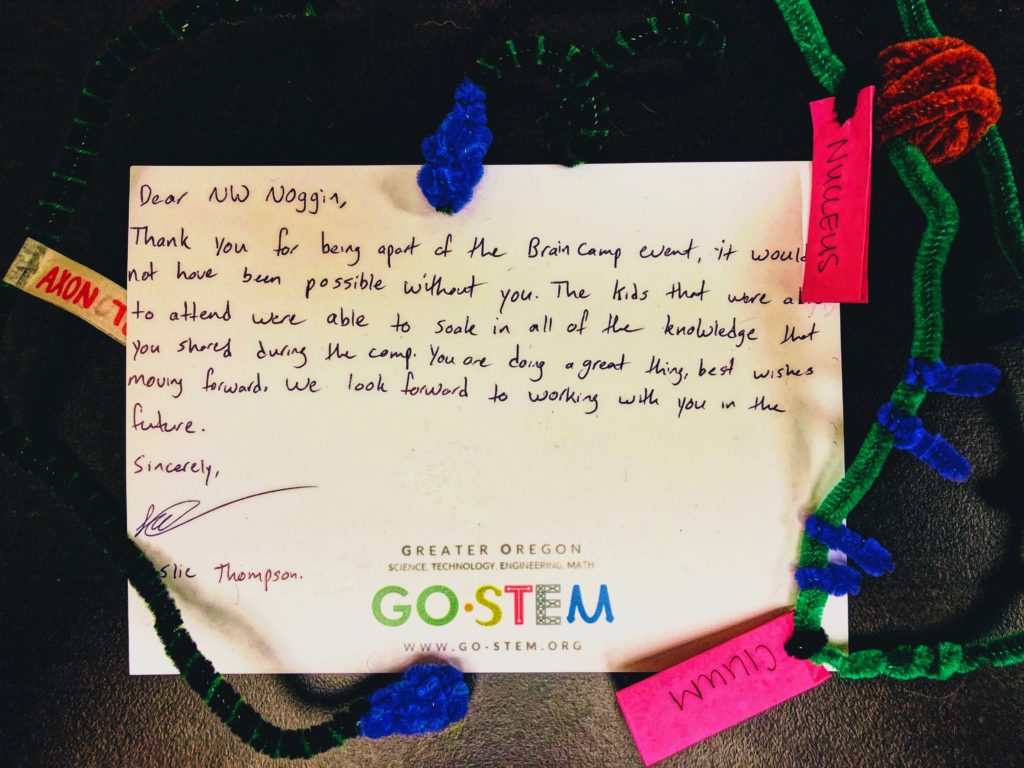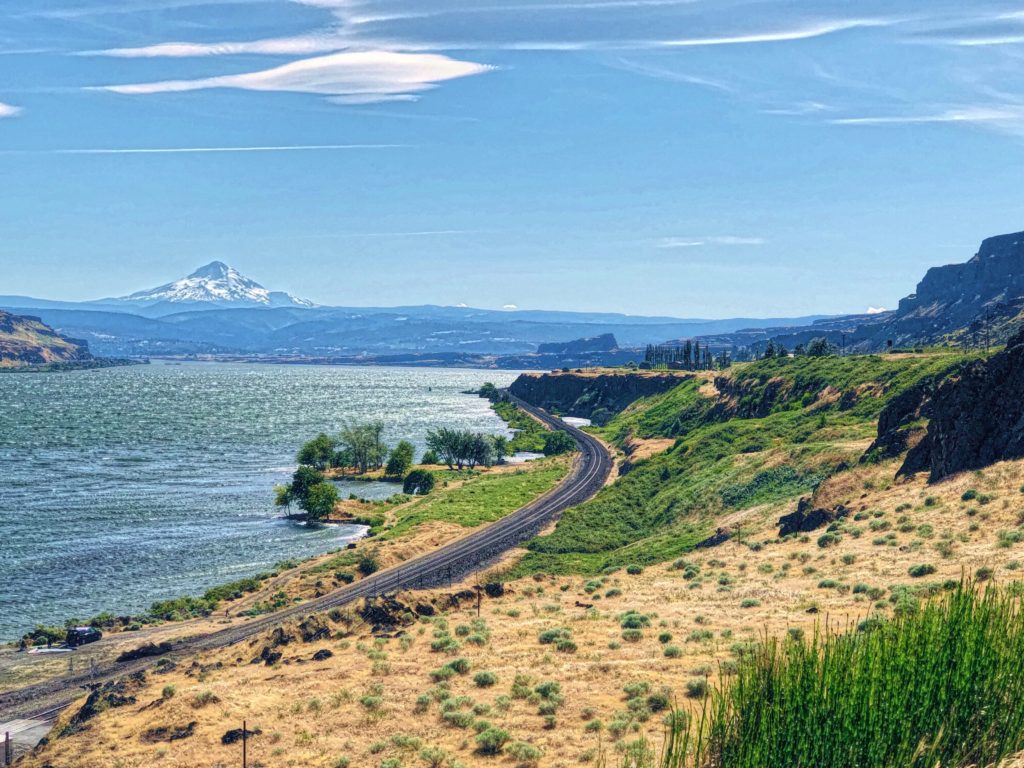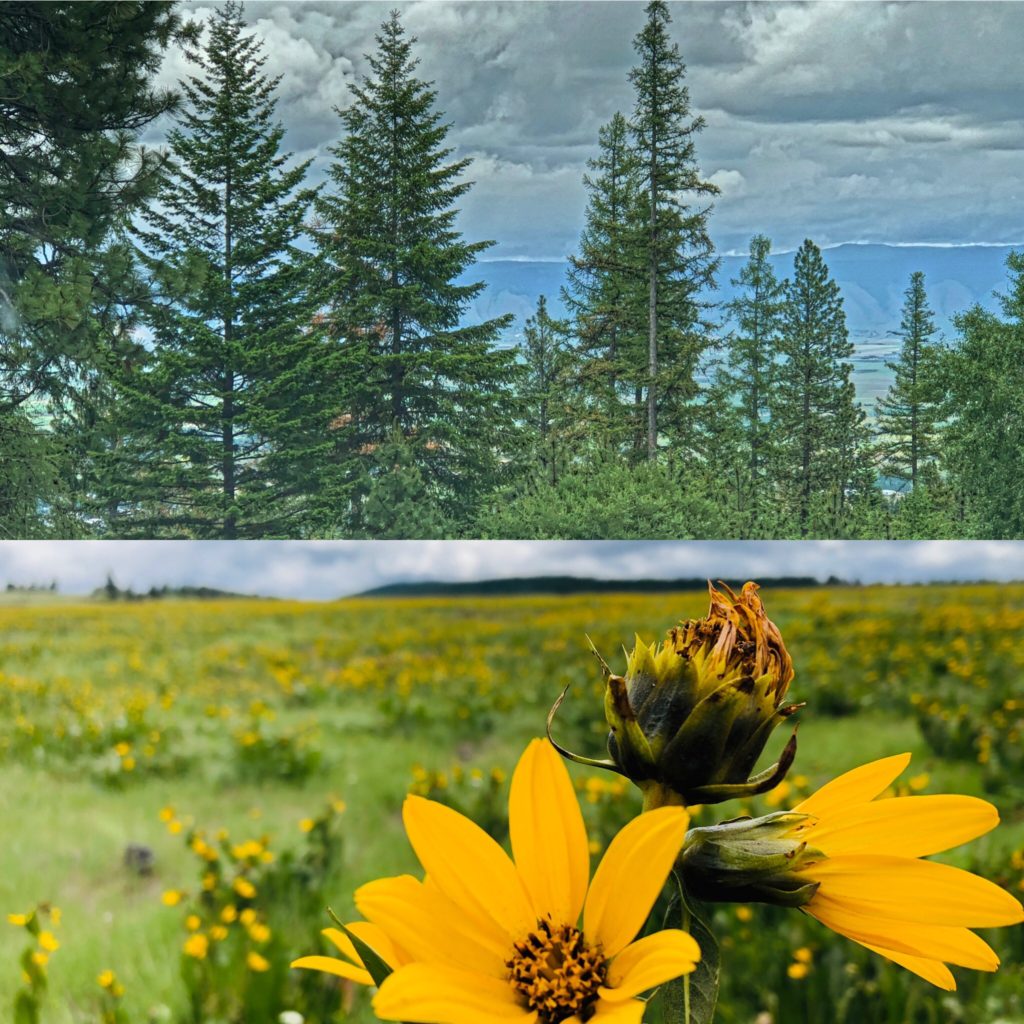
Brain cells connect, and those points of connection, called synapses, are changeable. Synapses will strengthen (“potentiate”), or weaken (“attenuate”) in response to changes in synaptic activity, which is determined by what you’re doing, experiencing, and/or perceiving at the time.
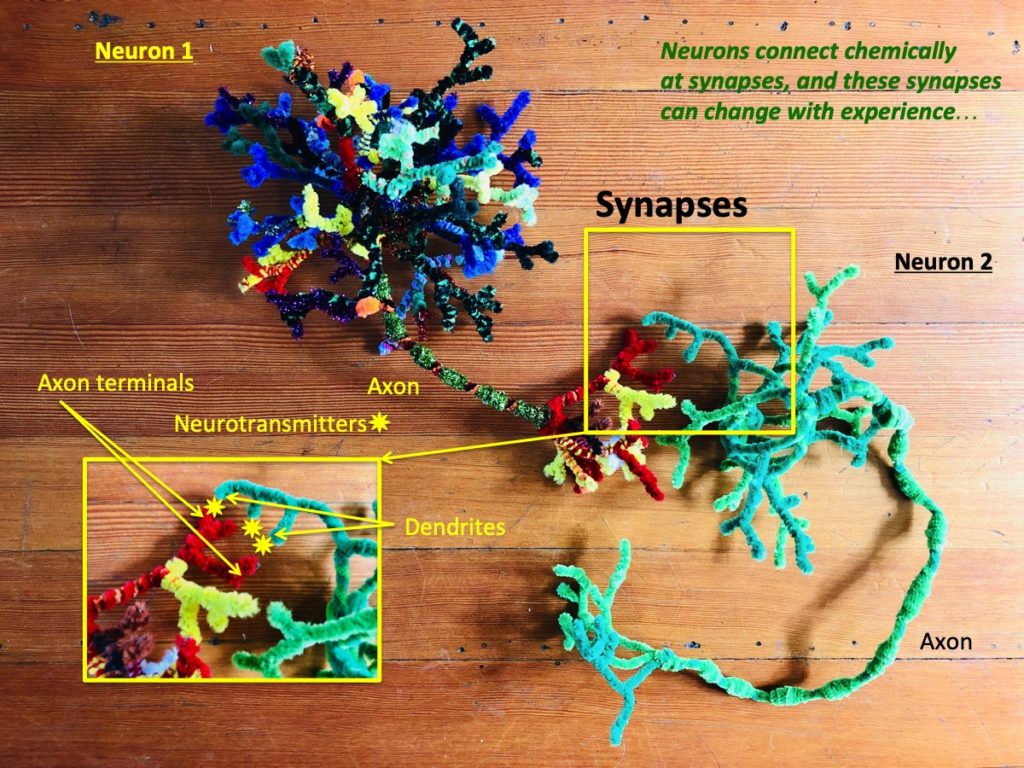
Highly stimulated neurons, for example, will change how they express genes, and might build and insert more (or different) protein receptors into their membranes – generating a bigger response to synaptic activity in the future. They may also grow wholly new excitatory synaptic connections!
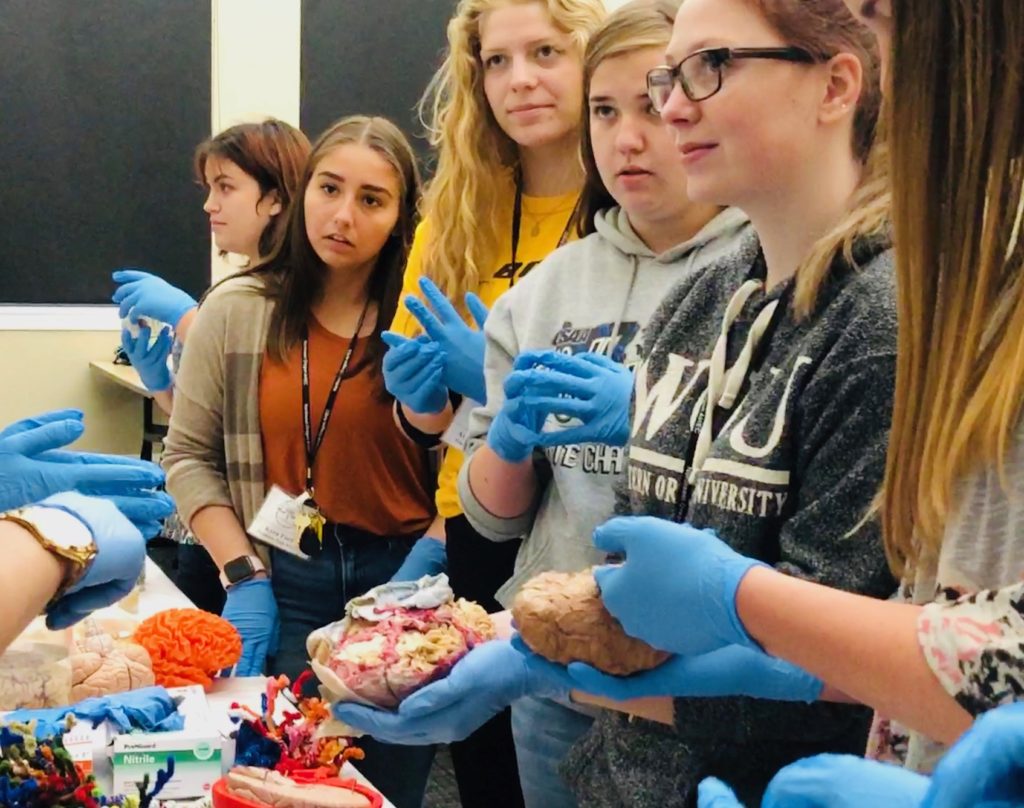
This long term potentiation (or “LTP”) happens at specific synapses when there is substantially increased neural activity, and more synaptic release of the brain’s primary excitatory neurotransmitter, glutamate. These changes in connectivity are thought to underlie changes in learning and memory…
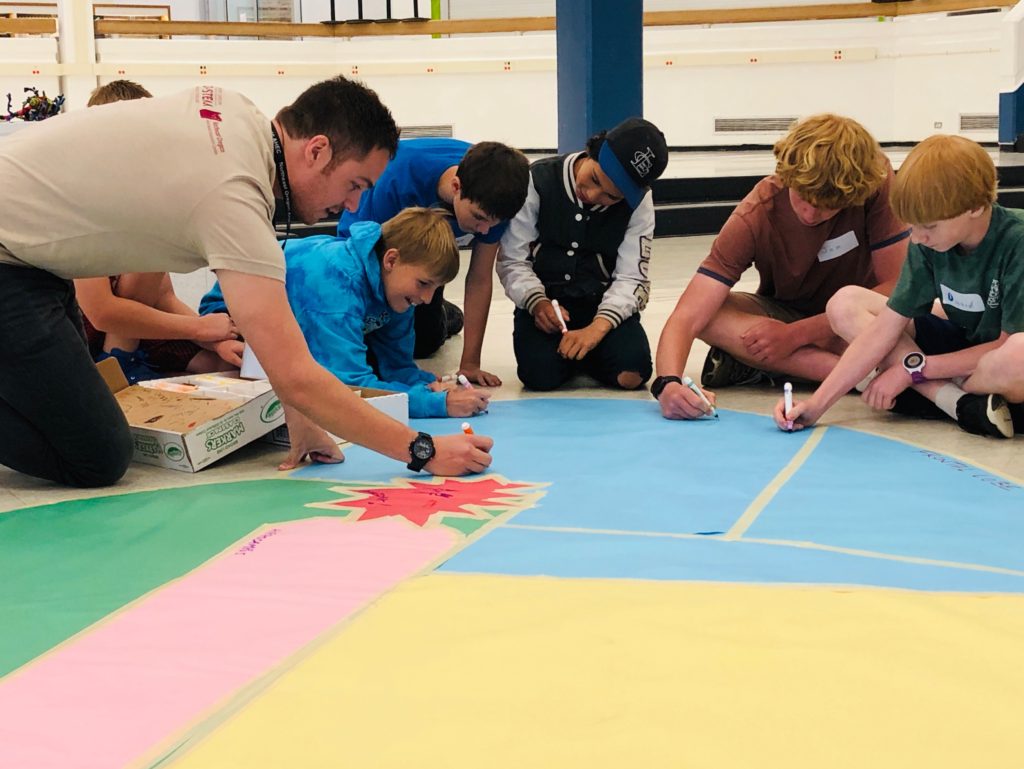
LEARN MORE: The discovery of long-term potentiation
LEARN MORE: NMDA Receptor-Dependent Long-Term Potentiation and Long-Term Depression (LTP/LTD)
LEARN MORE: Glutamate as a neurotransmitter in the healthy brain
We were definitely excited to strengthen our own NW Noggin community connections with some extraordinary people and outreach organizations in eastern Oregon…
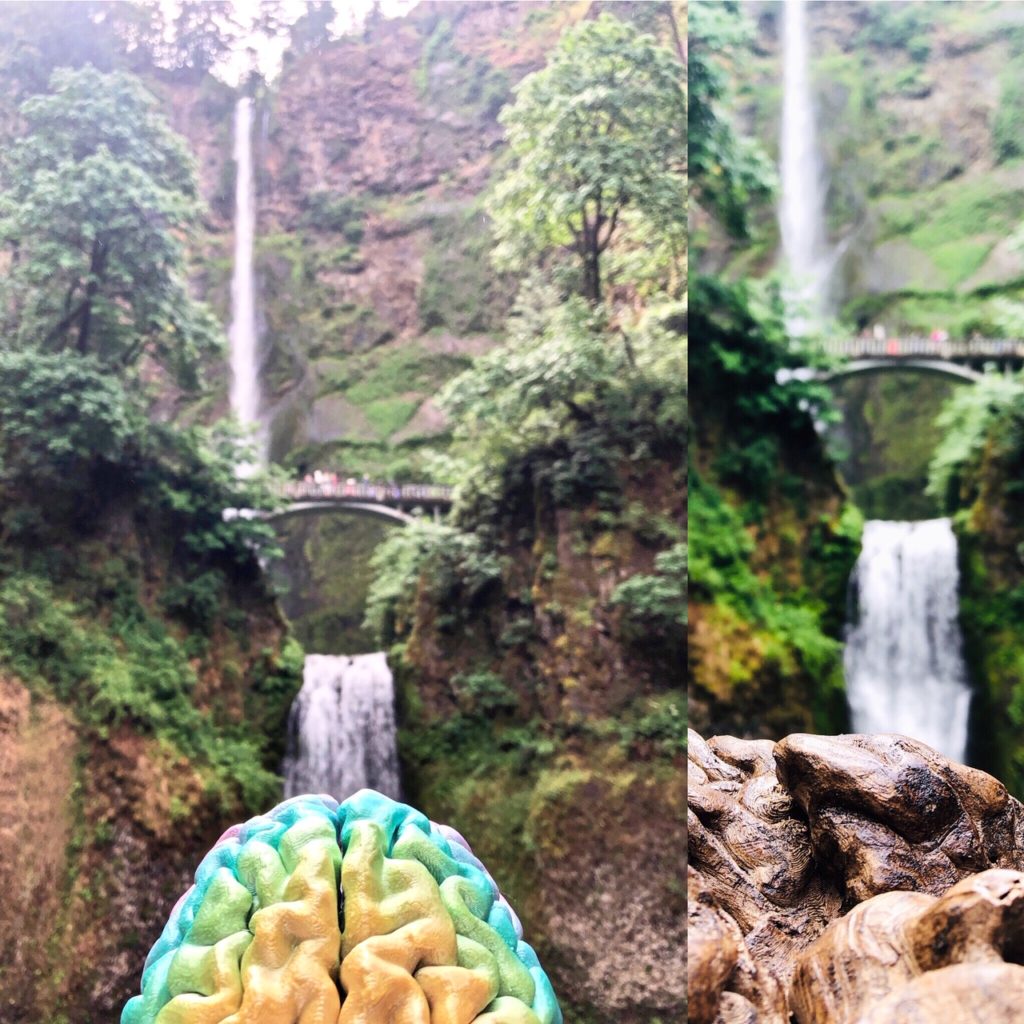
Back in 2017, in partnership with the Northeast Oregon Area Health Education Center (NEOAHEC), we brought our knowledgeable noggineers, extra brains, electrophysiological experiments and art to hear from young people who had gathered in beautiful alpine La Grande…
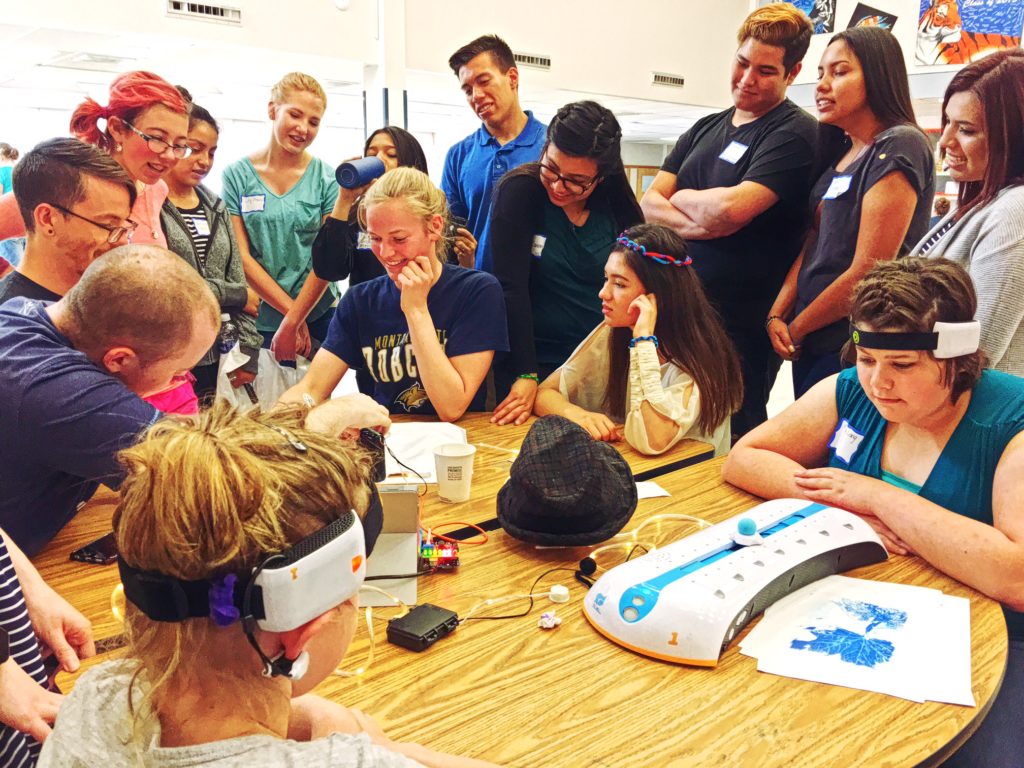
LEARN MORE: Blue Mountain Brains
This year we spent three more days amidst Oregon’s magnificent Blue Mountains, the traditional lands of the Nez Perce, Cayuse, Umatilla, Tenino and Northern Paiute peoples, past and present, collaborating with both NEOAHEC and GO-STEM (Greater Oregon STEM) to talk neuroscience research with young Oregonians throughout this vast region…

LEARN MORE: Native American Treaties, Northeastern Oregon
Our peripatetic volunteers included Gail Stonebarger and Jacob Schoen from the OHSU National Primate Research Center, and Julia Schmidt, Julia Gullikson, Cam Howard, Aaron Eisen, Ashley Keates and Gwen Starck from the Neuroscience Club (and Psychology) at Portland State…

Meredith Lair, NEOAHEC Executive Director, welcomed us to Alikut Hall at Eastern Oregon University (EOU), the beautiful home of the Mountaineers!

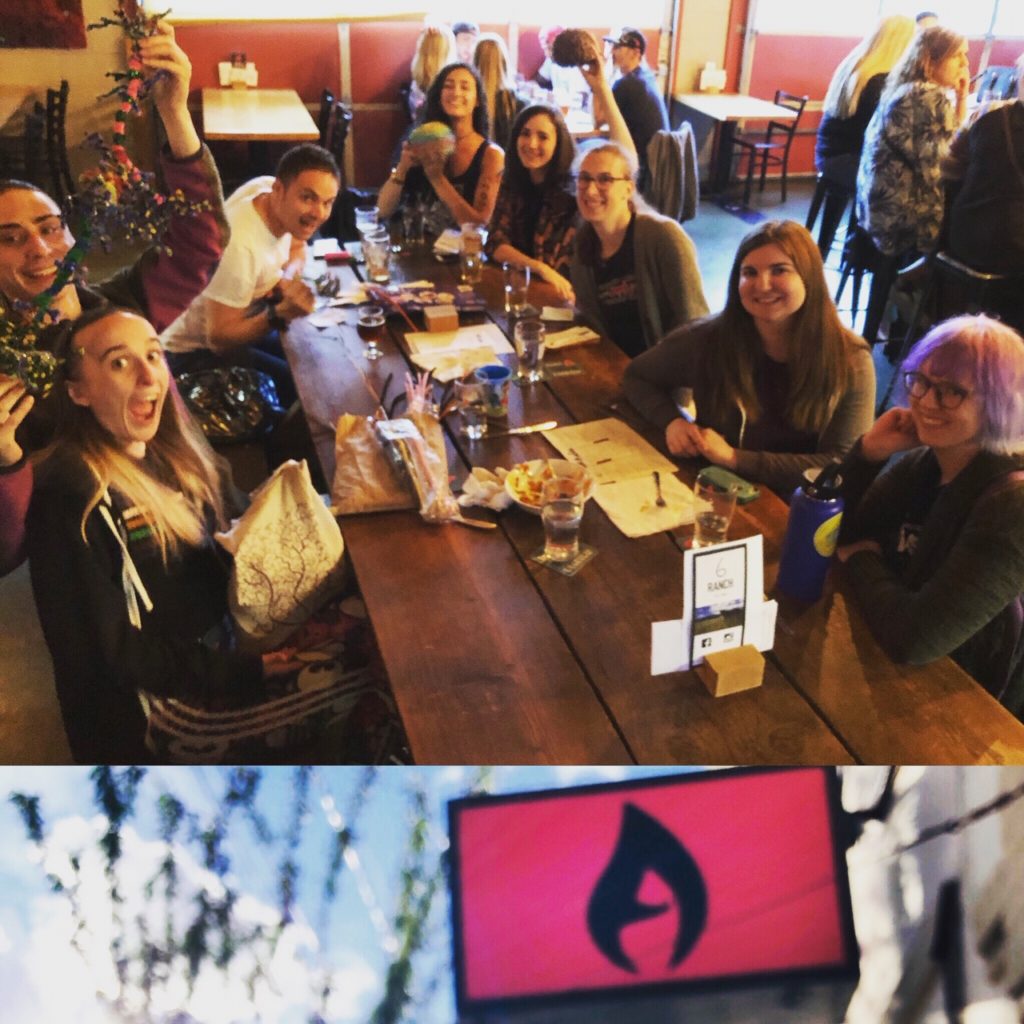
MedQuest Friday
We woke up early on Friday morning to attend MedQuest, an annual week of health career exploration run by NEOAHEC on the EOU campus…
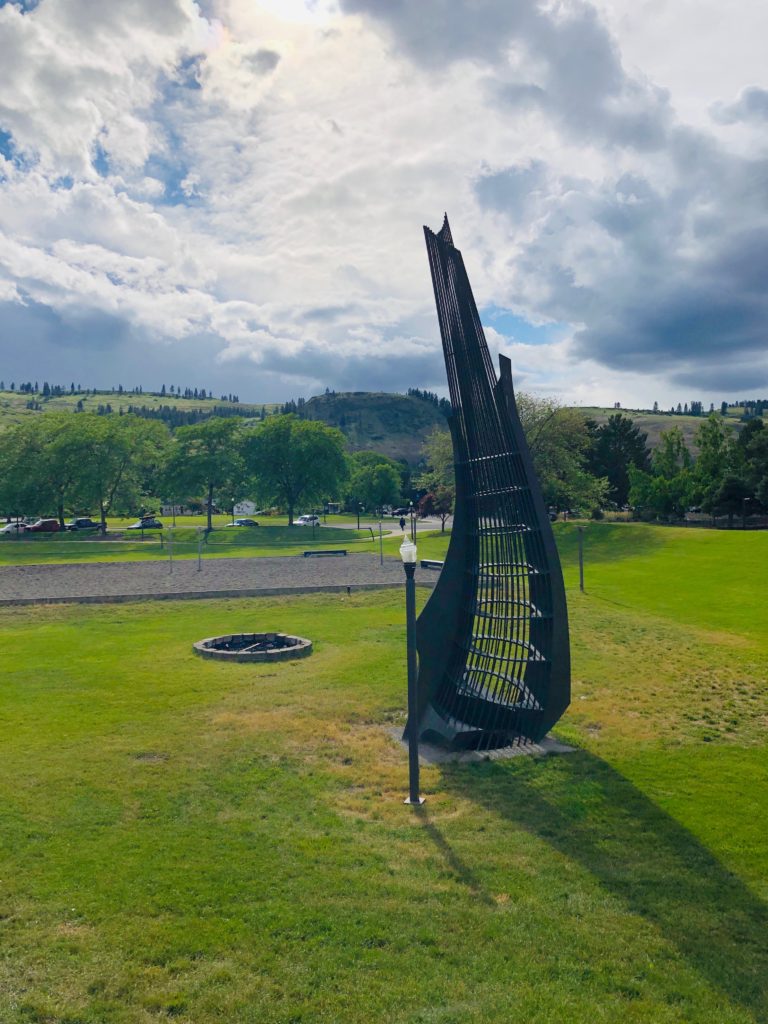
We wheeled our brain & art cart (from Cartwright Design) into historic Ackerman Hall, and began with introductions and questions about the brain…
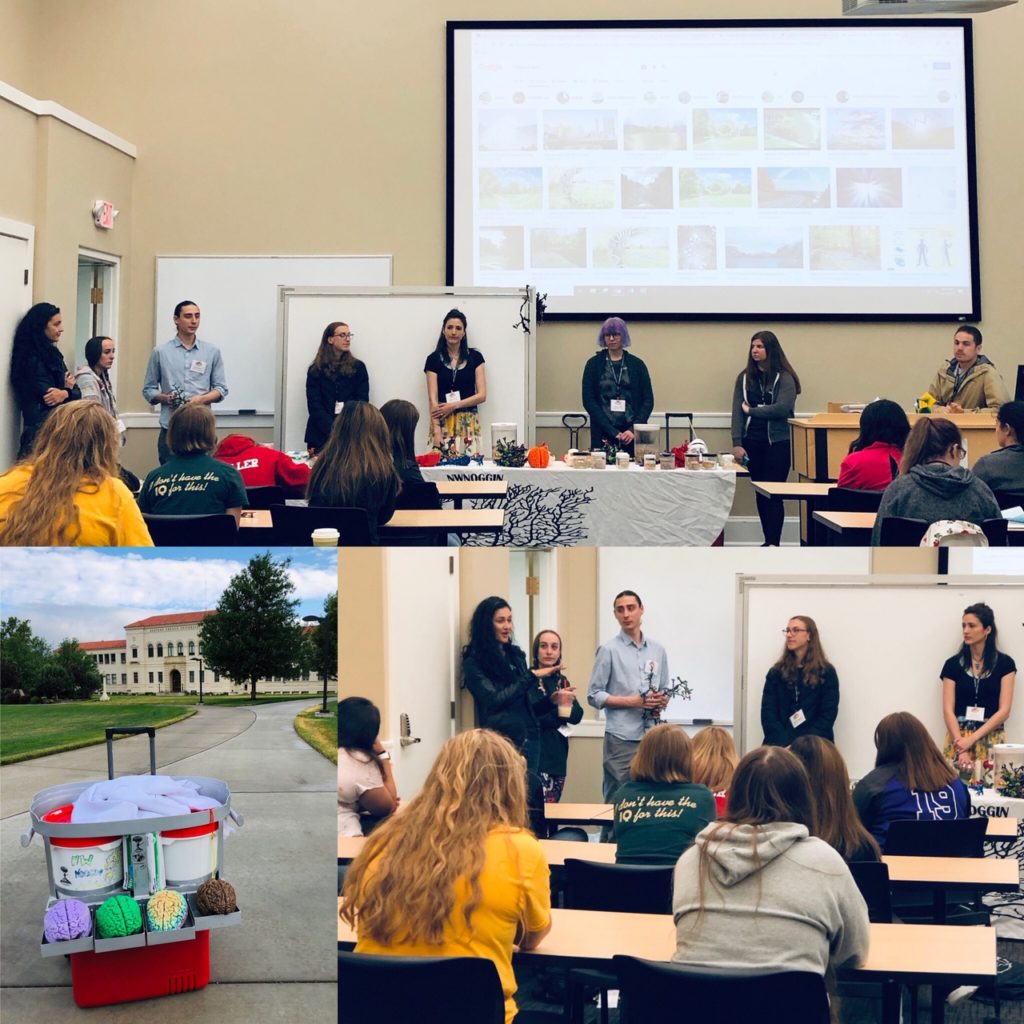
And there were questions!
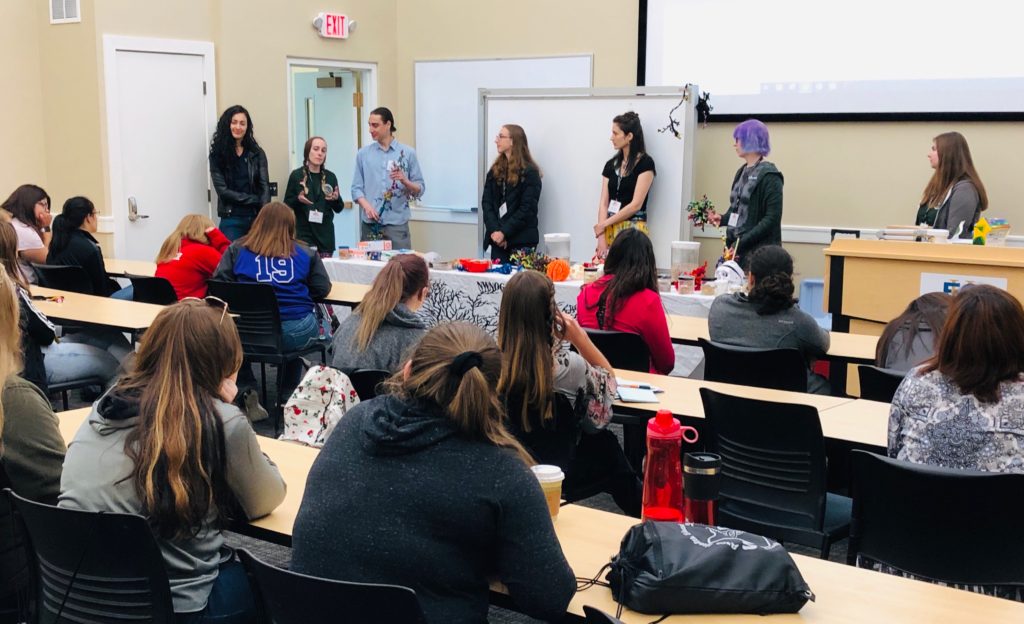
“How does transcranial magnetic stimulation (TMS) work? Can it help those suffering with depression? What do you think about plant based or nutritional therapies for mental health? What happens to your brain after a traumatic brain injury (TBI)? How can measuring or changing the electrical activity of our nervous system help with diagnosis and treatment of specific disorders?”
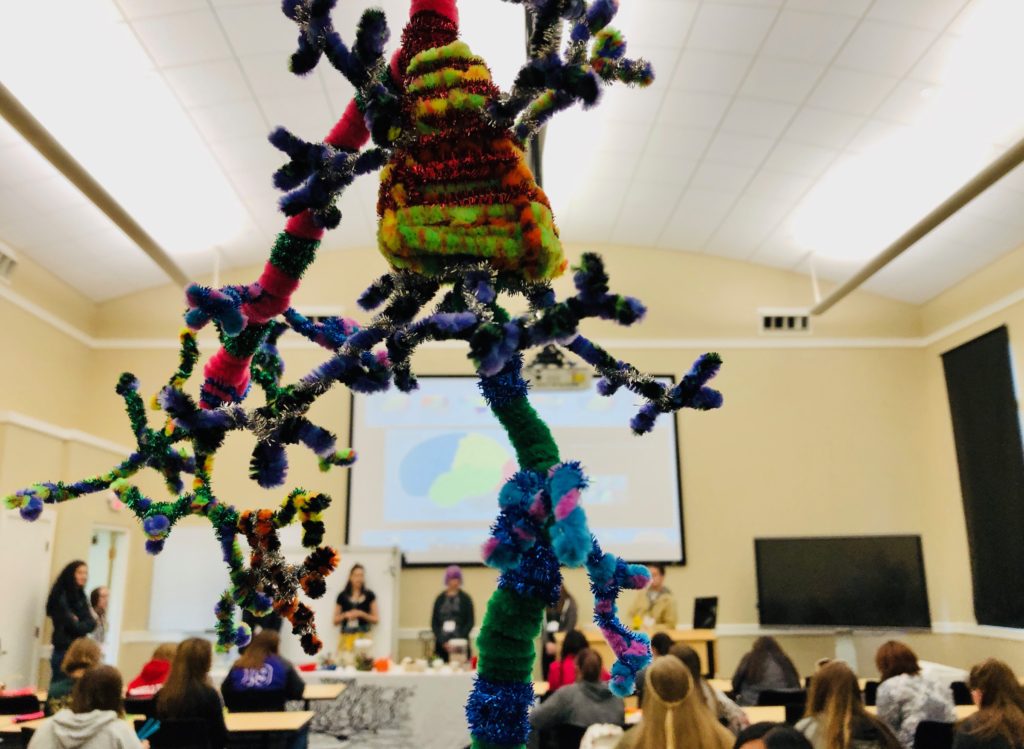
LEARN MORE: Brain Stimulation Therapies
LEARN MORE: Transcranial magnetic stimulation for the treatment of major depression
LEARN MORE: Advances in Medicinal Plants with Effects on Anxiety Behavior Associated to Mental and Health Conditions
LEARN MORE: Nutritional Psychiatry: Where to Next?
LEARN MORE: Traumatic Brain Injury (TBI): Condition Information
From Gail Stonebarger in Henryk Urbanski‘s lab at OHSU, who studies circadian rhythms, hormones, and aging in some of the oldest rhesus macaque monkeys in the world: “I was really impressed with a question one of the young women asked about hormonal influences, along the lines of: drugs influence our brains so much more as teenagers, since we haven’t finished developing, and you said hormones affect our brain too, so does teenage pregnancy have different effects on the brain than an adult becoming pregnant? She and I had a great chat about the hormone environment during pregnancy, and how our bodies and brains are set up evolutionarily.”
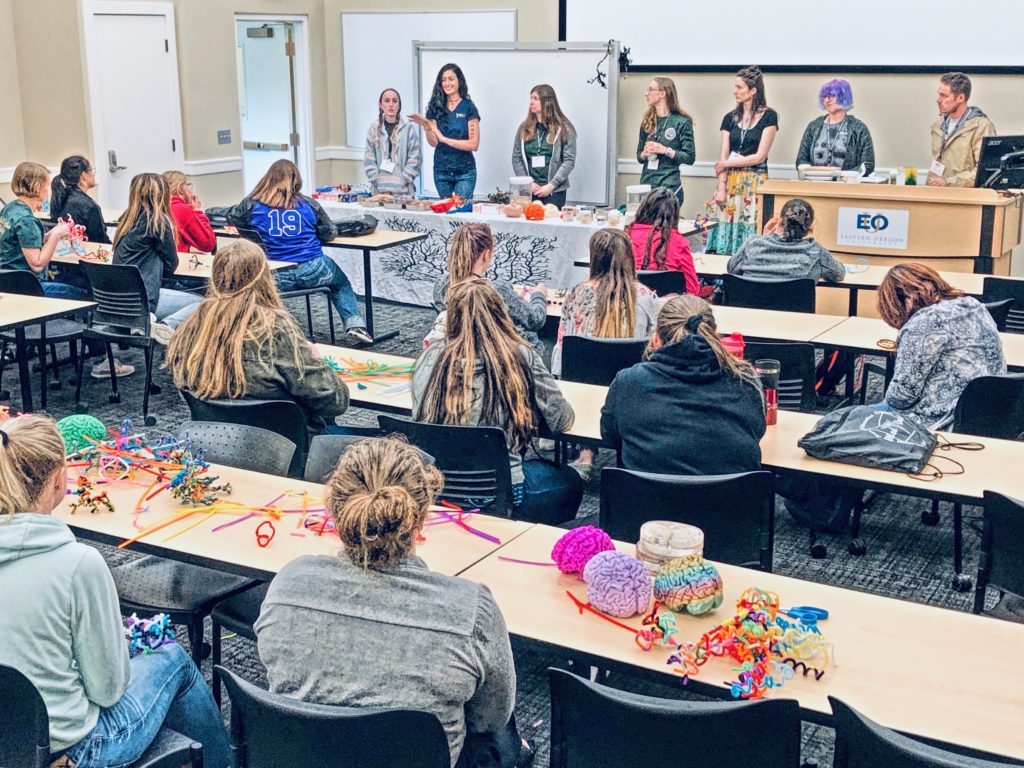
LEARN MORE: Hormones in pregnancy
LEARN MORE: Endocrinology of Pregnancy
LEARN MORE: Age-related changes in the female hormonal environment during reproductive life
LEARN MORE: Effect of an obesogenic diet on circadian activity and serum hormones in old monkeys
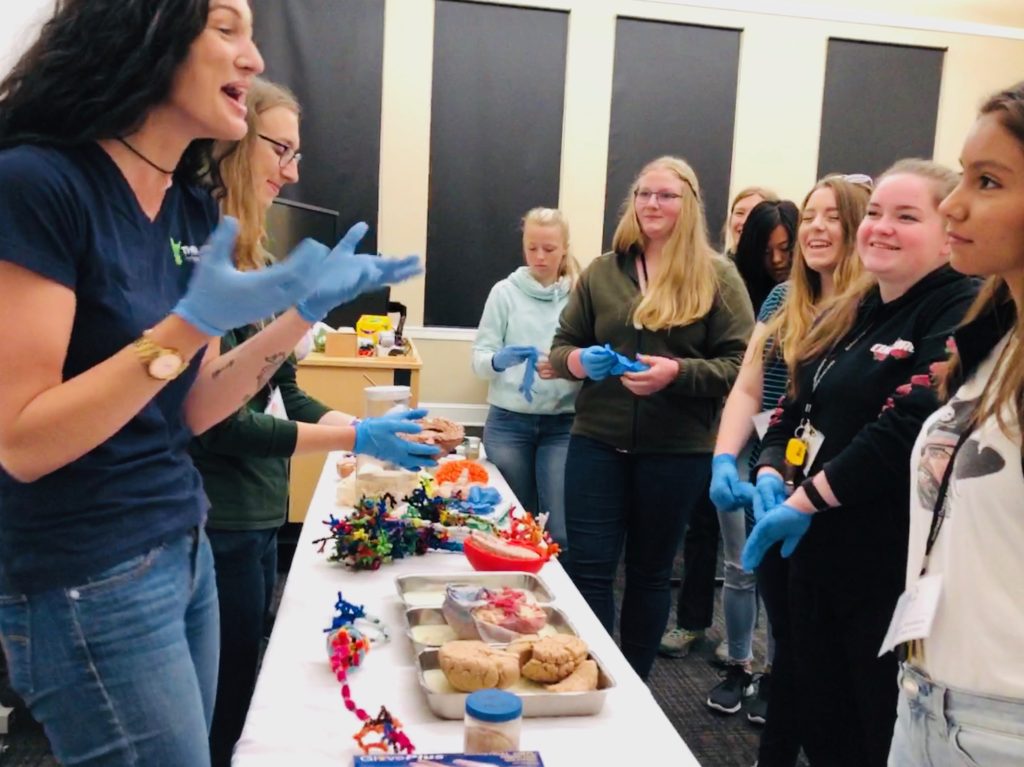
“I talked with a lot of these young women about sex differences in research, and about the fairly recent NIH decision to mandate that both males and females be included in any study, including animal studies, unless there is valid scientific justification for examining only one sex.“
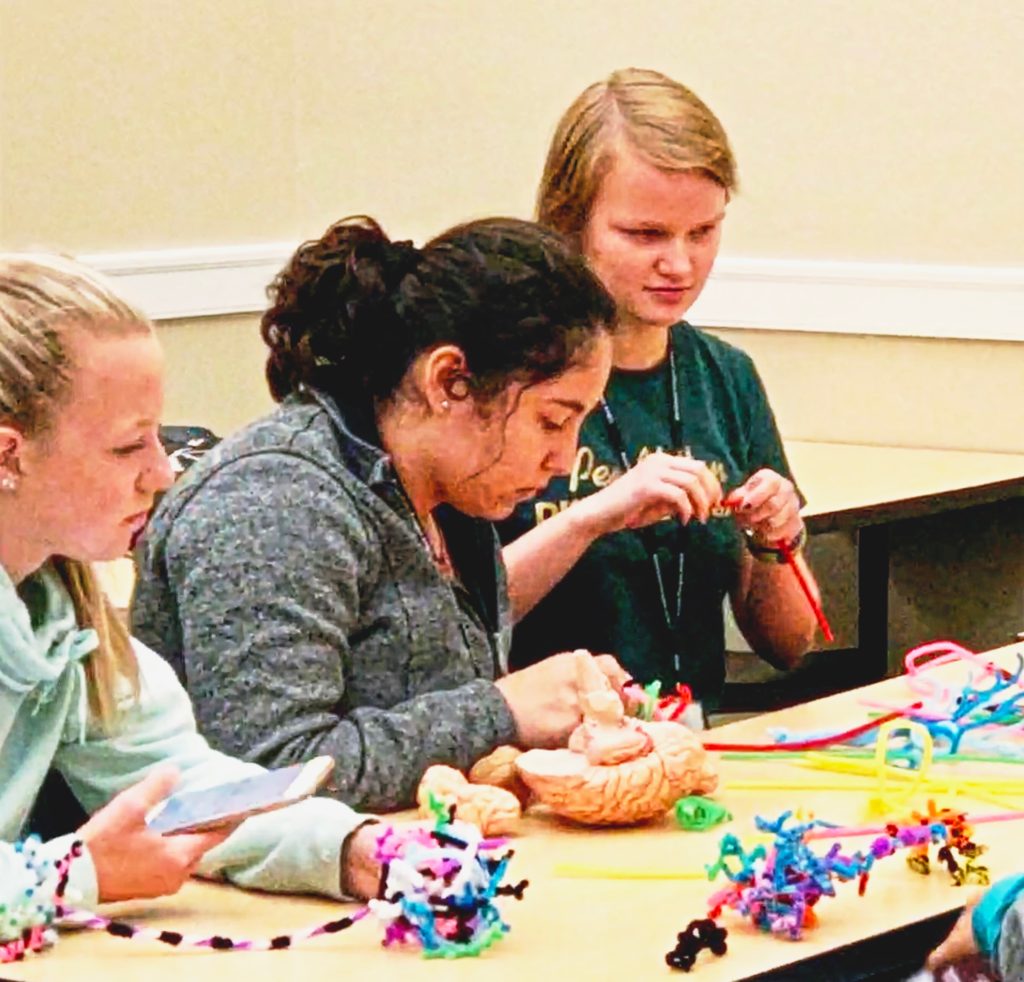
LEARN MORE: NIH Policy on Sex as a Biological Variable
LEARN MORE: NIH Policy and Guidelines on The Inclusion of Women and Minorities as Subjects in Clinical Research
LEARN MORE: Sex differences in the brain: Implications for behavioral and biomedical research
LEARN MORE: Brains & Sex @ SfN

“The group of girls we worked with on Friday was so wonderful and engaged! It was such a great, involved group of students, and it was a pleasure to meet them! Thanks again to everyone who made it possible (:”
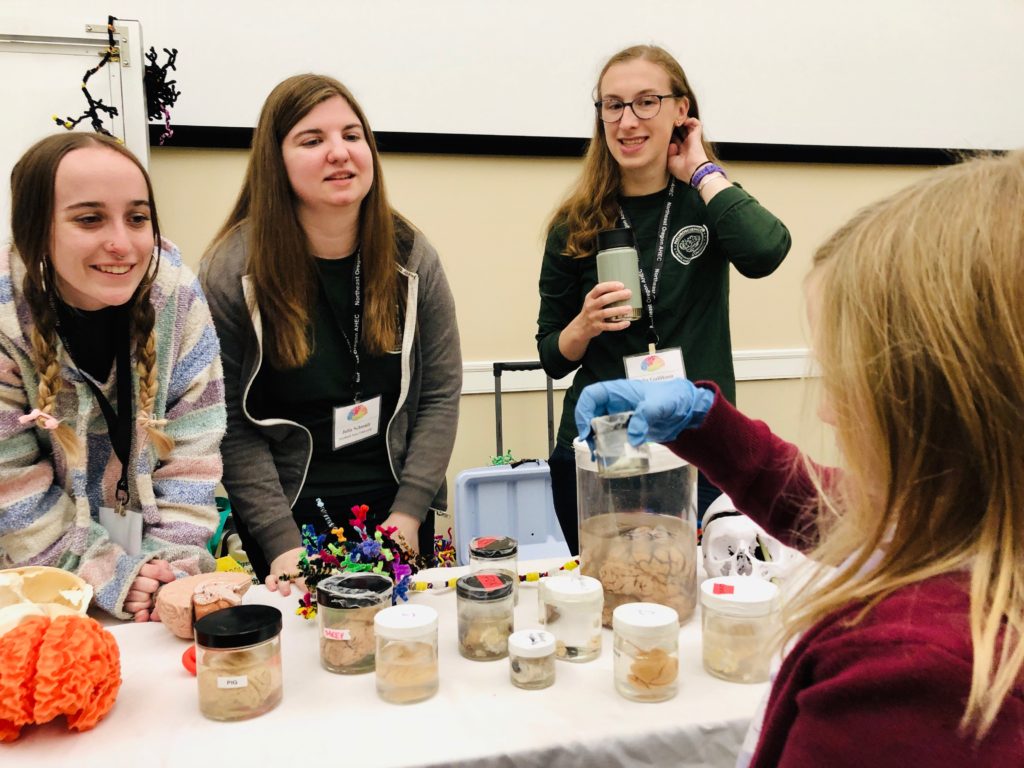
From Cam Howard at Portland State University: “I had an absolutely AMAZING outreach experience! Things that really struck me with the first group included the fact that it was all female (something really cool considering, at least from my experience growing up, females aren’t always as encouraged with STEM!) and that they had fascinating questions about animals based on their backgrounds living in more rural areas with farm and ranch experience. Many spent a lot of time with me while I was discussing animal brains and had intriguing observations about their sheep’s behavior, the different personalities they’ve noticed with their horses, and emotional bonding with animals (e.g., a goat who would knock at the door until someone came out to make sure his family was okay).”
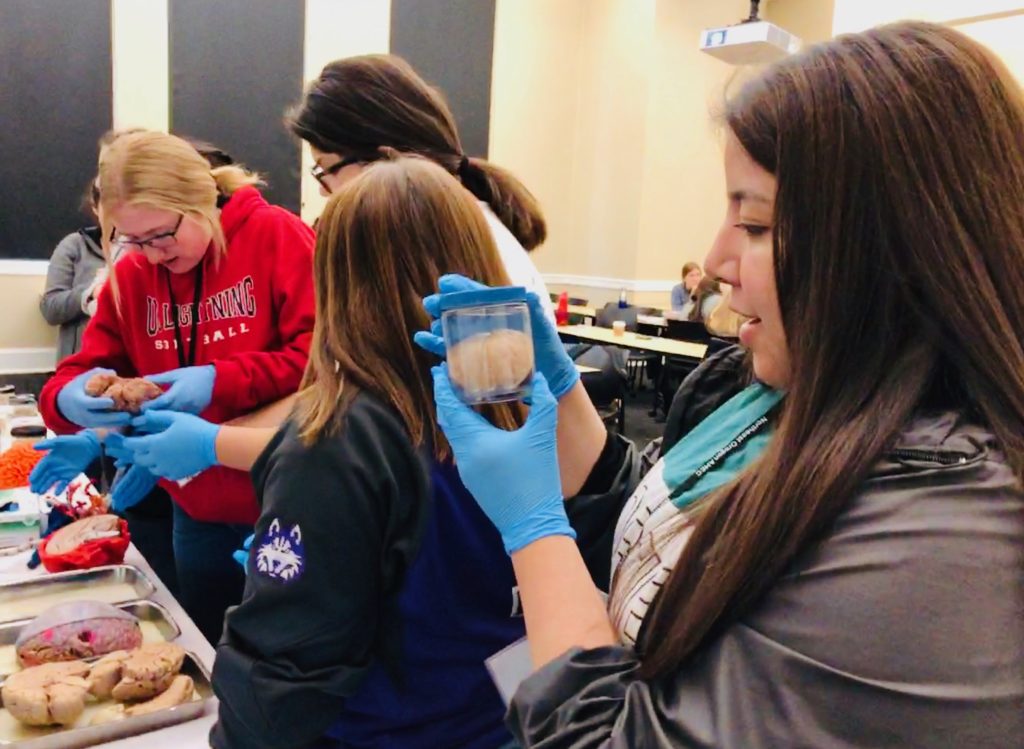
“You can always tell about somebody by the way they put their hands on an animal.” –Betty White
LEARN MORE: Farm Animal Cognition—Linking Behavior, Welfare and Ethics
LEARN MORE: How the sheep’s brain controls the visual recognition of animals and humans
LEARN MORE: Domestic horses (Equus caballus) prefer to approach humans displaying a submissive body posture rather than a dominant body posture
LEARN MORE: Visual attention, an indicator of human-animal relationships? A study of domestic horses (Equus caballus)
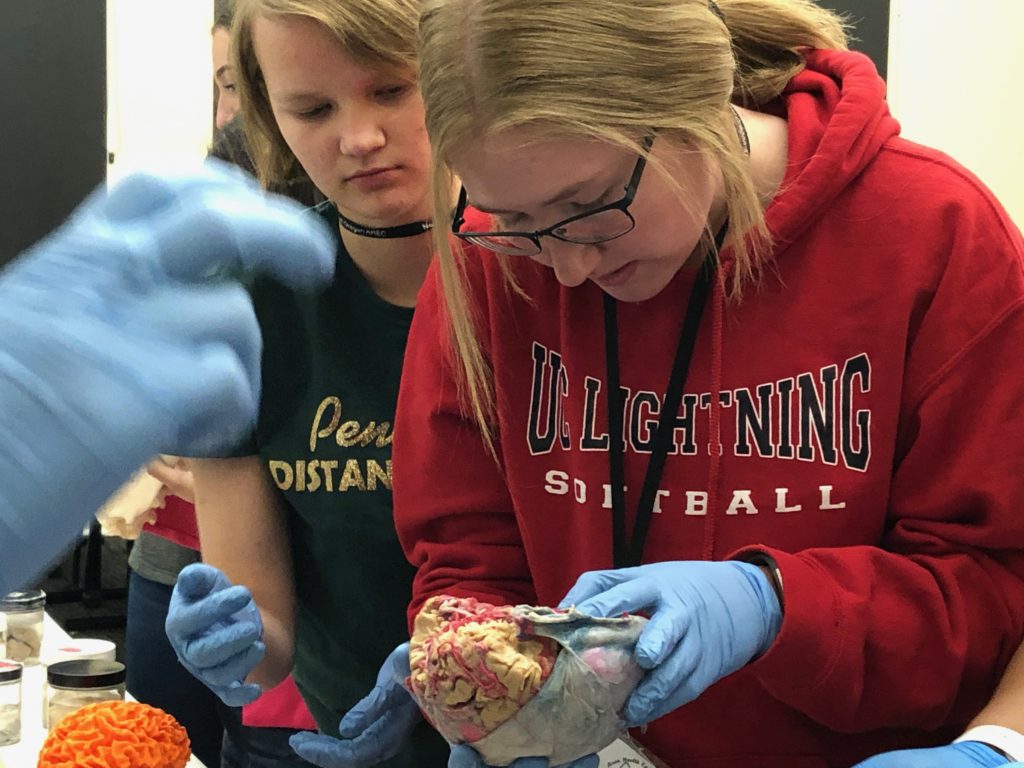
“I was also super lucky to get to discuss how different drugs affect the ADHD/ADD brain, including personal experience, which is something I feel is beneficial as it reminds people who may have these disorders that they’re not alone and can thrive in a society unwilling to adjust for them. Two women really wanted to learn more and asked for contact information so they could email further questions. In both cases, we got to discuss the spectrum aspect of the disorder (including research on different subtypes) as well as sexist attitudes that still impact diagnosis, treatment and research…”
LEARN MORE: Attention-Deficit/Hyperactivity Disorder
LEARN MORE: Cognitive Neuroscience of Attention Deficit Hyperactivity Disorder (ADHD) and Its Clinical Translation
LEARN MORE: Understanding Attention-Deficit/Hyperactivity Disorder From Childhood to Adulthood
LEARN MORE: Sex and age differences in Attention-Deficit/Hyperactivity Disorder symptoms and diagnoses
LEARN MORE: ADHD: a women’s issue
LEARN MORE: Sexism Affects the Way People Are Diagnosed With ADHD
LEARN MORE: ADHD & Attention Research at OHSU
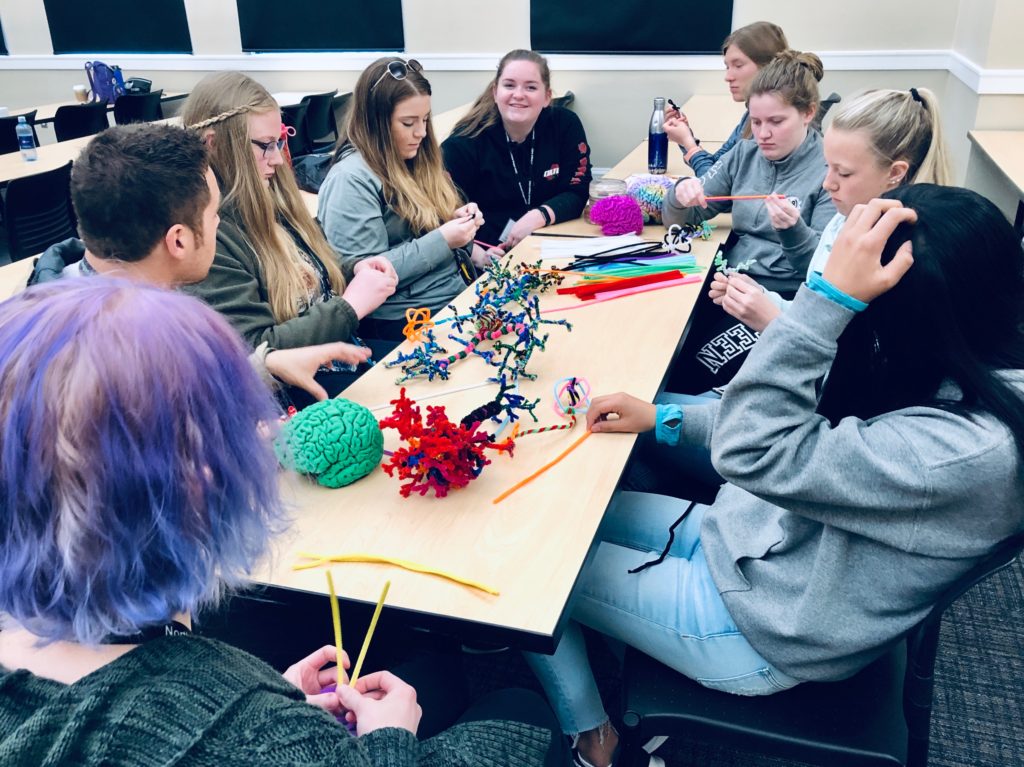
At MedQuest we described how to pursue undergraduate and graduate studies in neuroscience, crafted our own brain cells, explored shocking electrical aspects of neurons and muscle, and joined smaller groups for enjoyable, informative discussions about the brain and behavior…
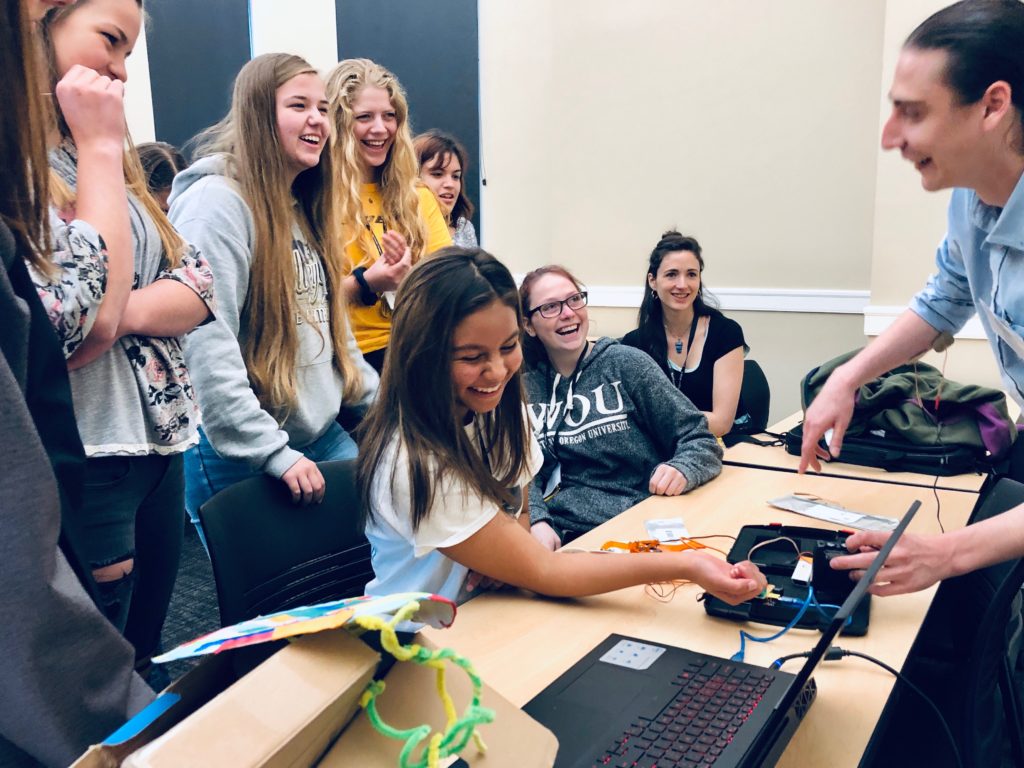
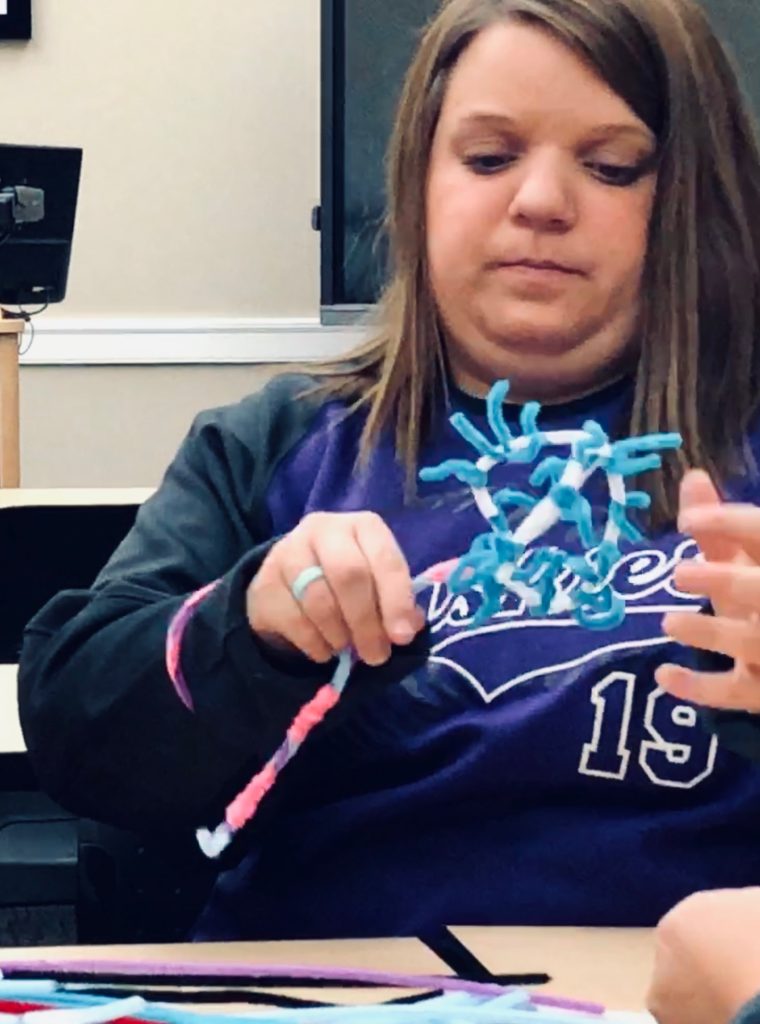
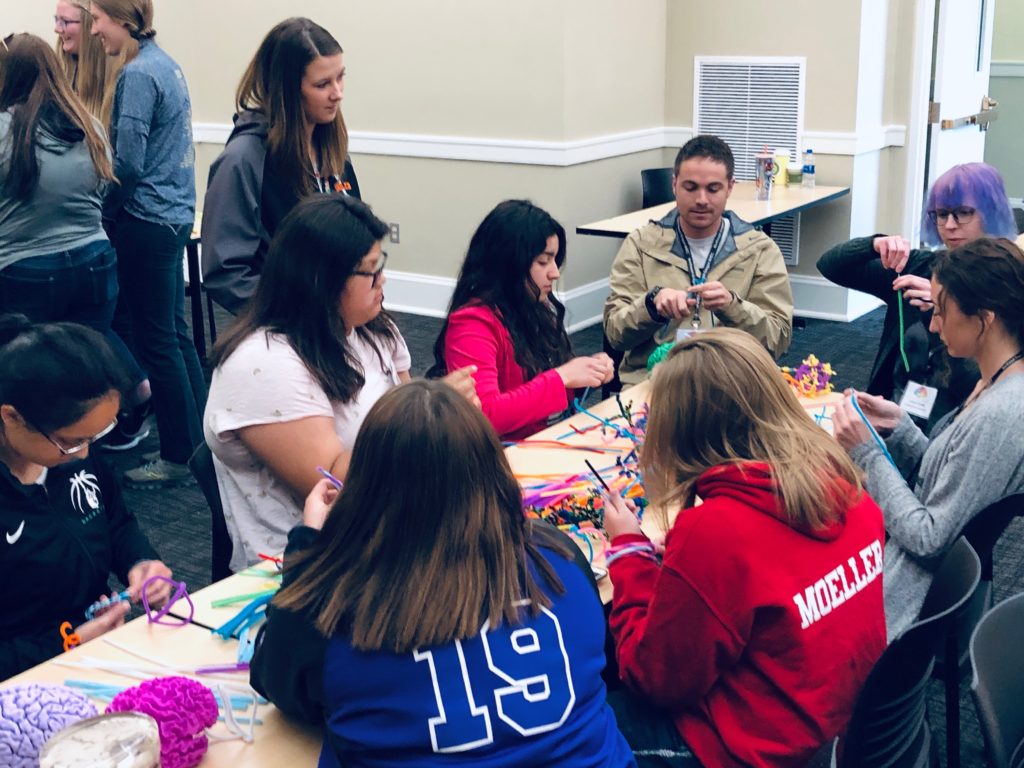
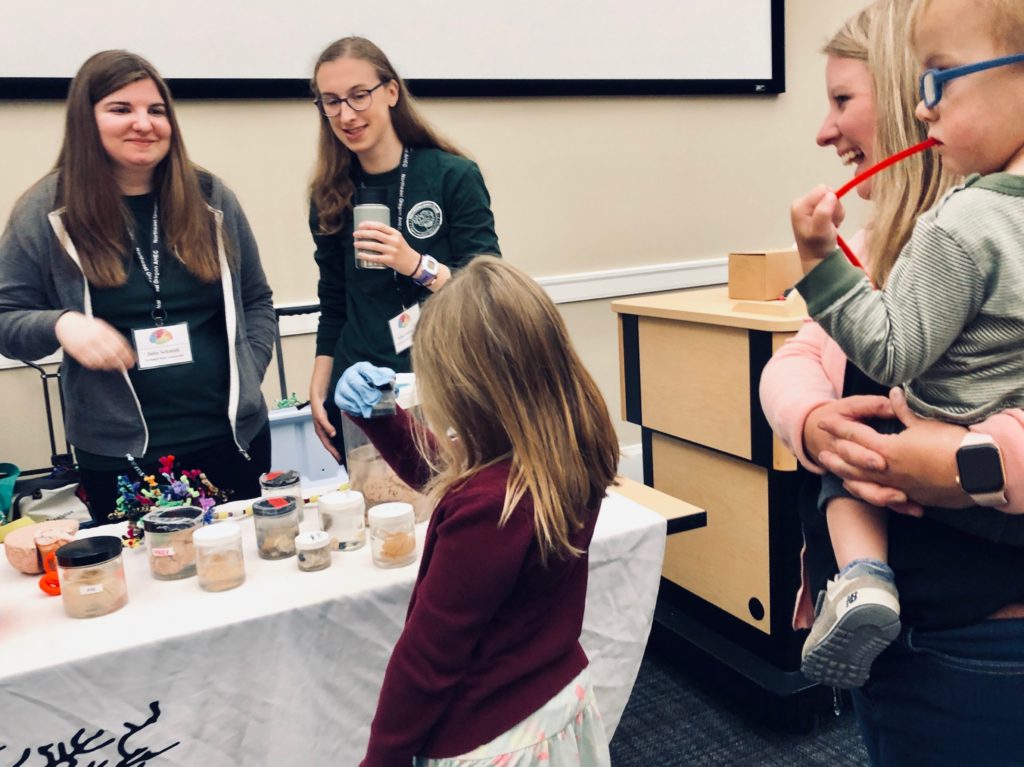
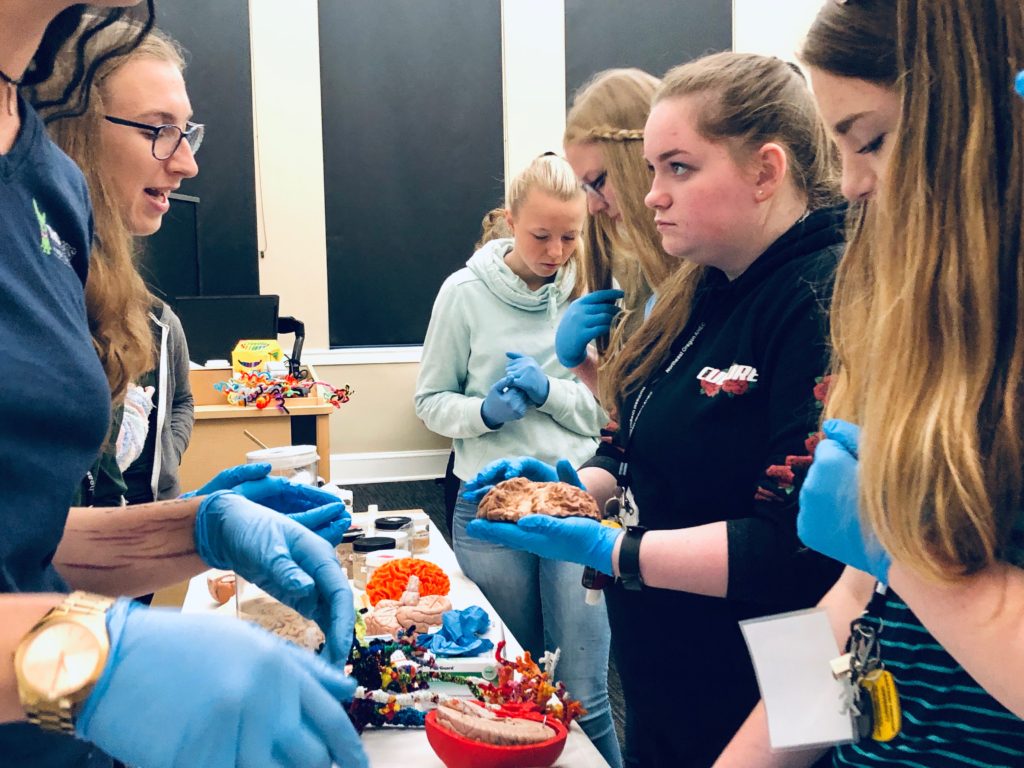
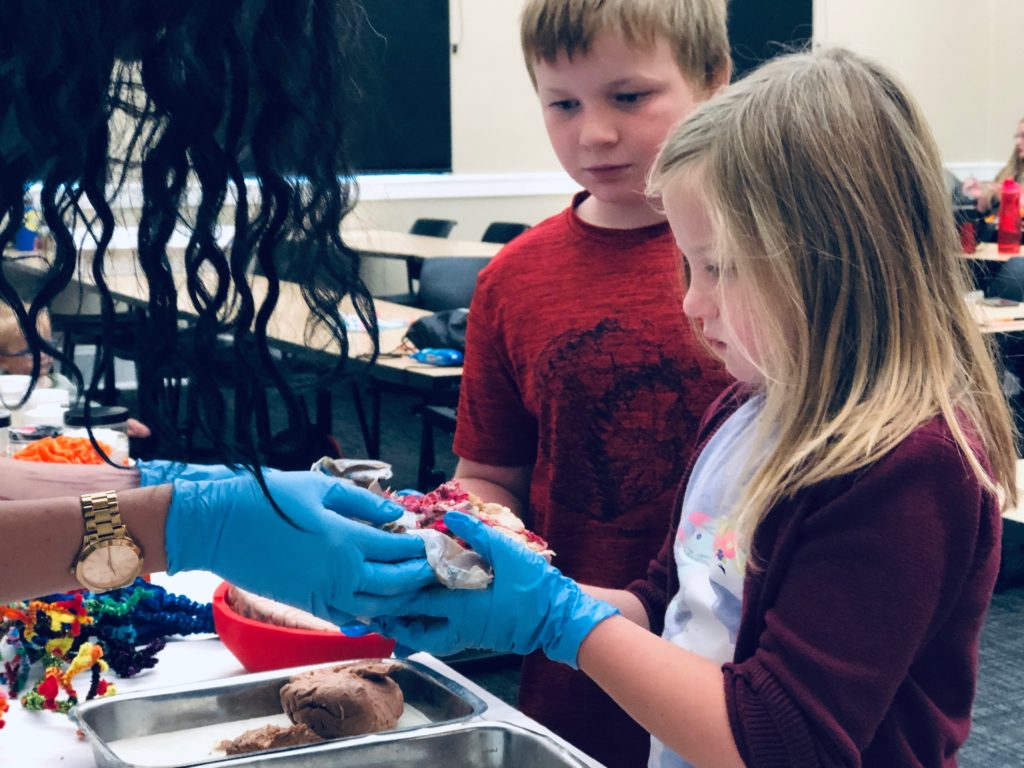
Afterwards, we spent the afternoon exploring La Grande, including beautiful Morgan Lake, and enjoyed a delicious dinner at Local Harvest Pizza courtesy of GO-STEM Communications Intern Leslie Thompson…
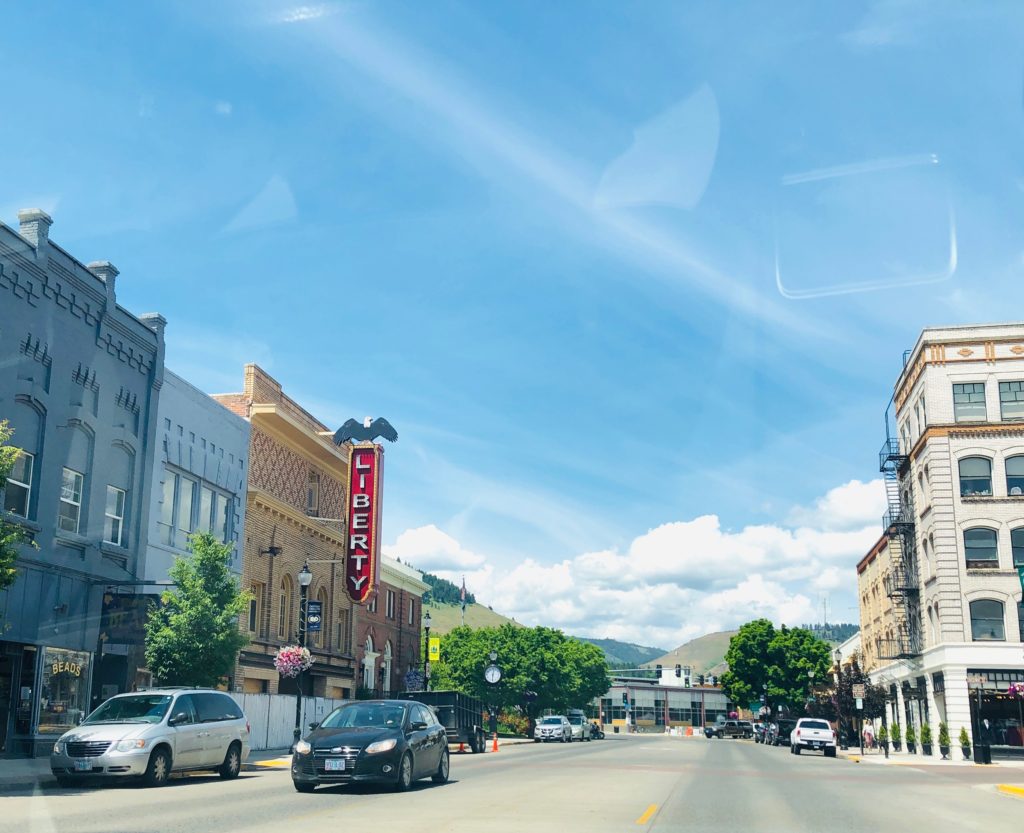
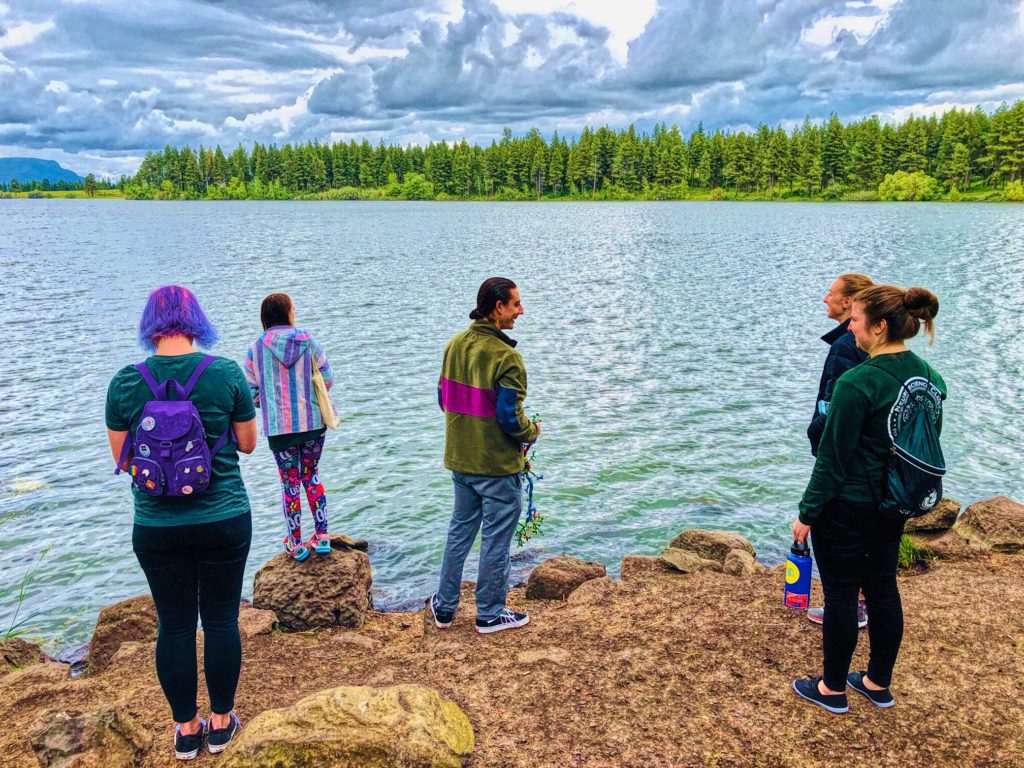
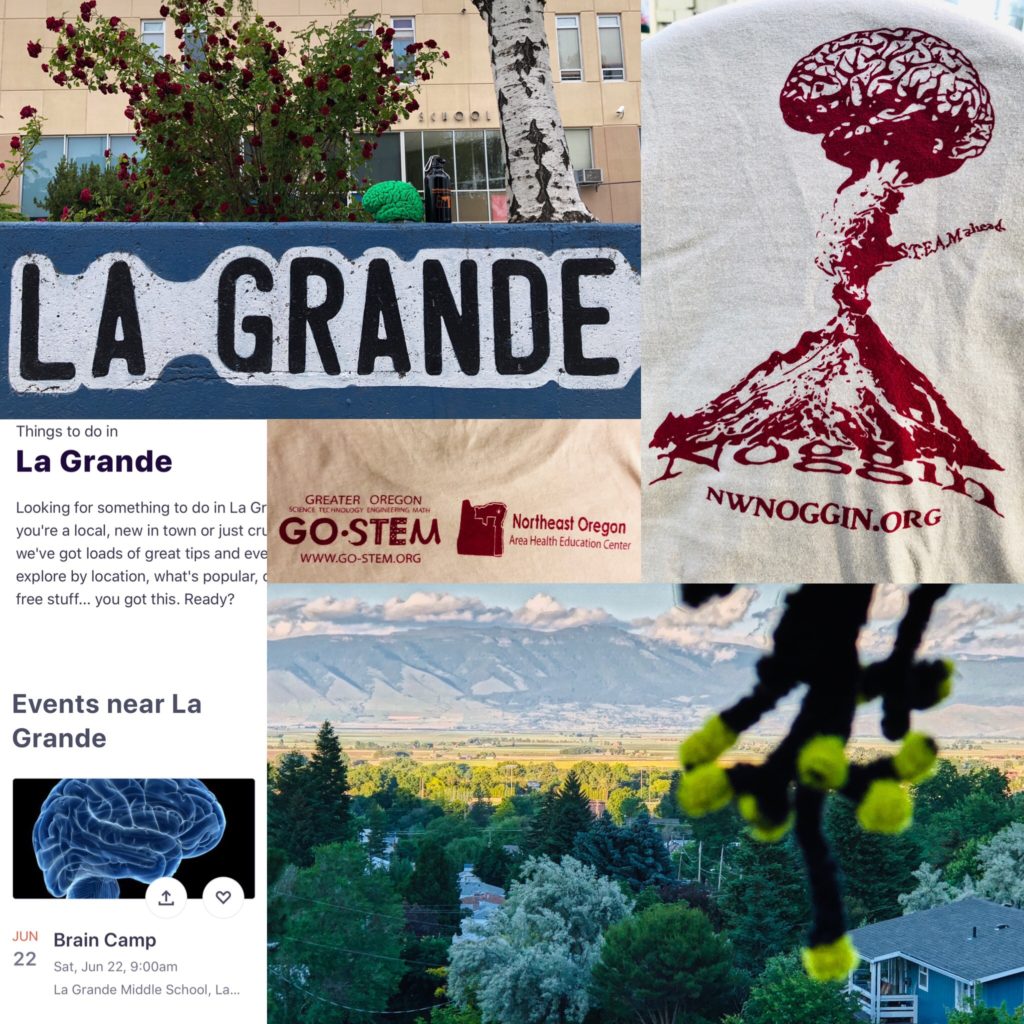
Thank you GO-STEM for the awesome t-shirts!!
Brain Camp Saturday!
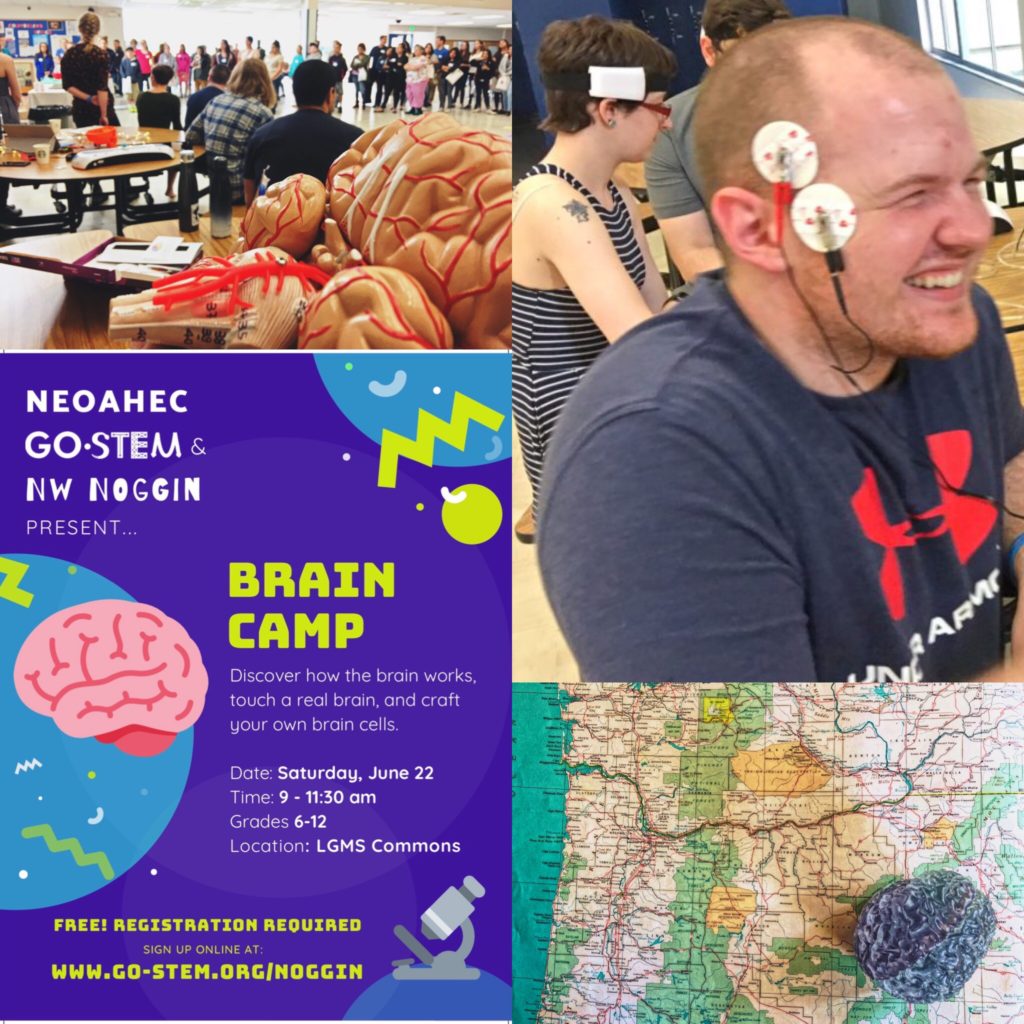
Early on Saturday, fueled by coffee and under the watchful eyes of Fester, the stuffed cougar on the wall, we welcomed about 30 young people to GO-STEM’s free Brain Camp at La Grande Middle School!
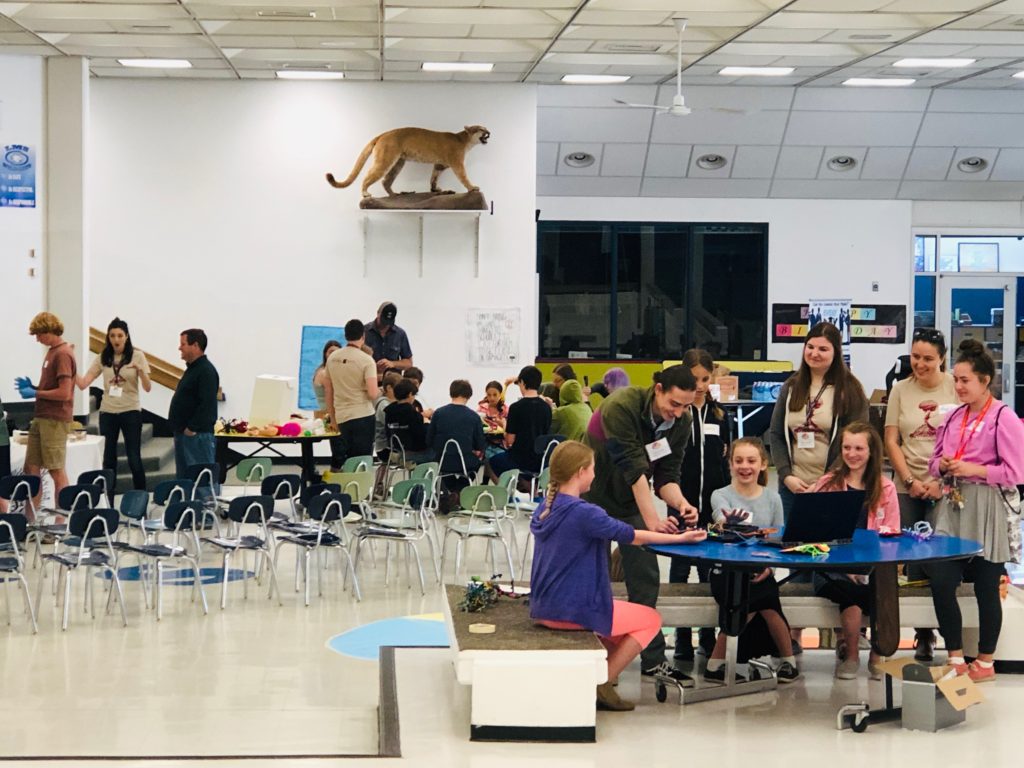
Thanks to custodian Travis Moran, we had plenty of supplies for crafting a huge, colorful brain on the floor!

MAKE YOUR OWN: MAKE Brain Map
LEARN MORE: STEAM Art Projects
Sleep is the most common topic we’re asked about in schools! We discussed the very natural changes in circadian rhythms occurring during adolescence, and the need for public policy changes – particularly later start times in high schools – to support healthy brain development, better learning and memory, and improvements in school attendance and mental health…
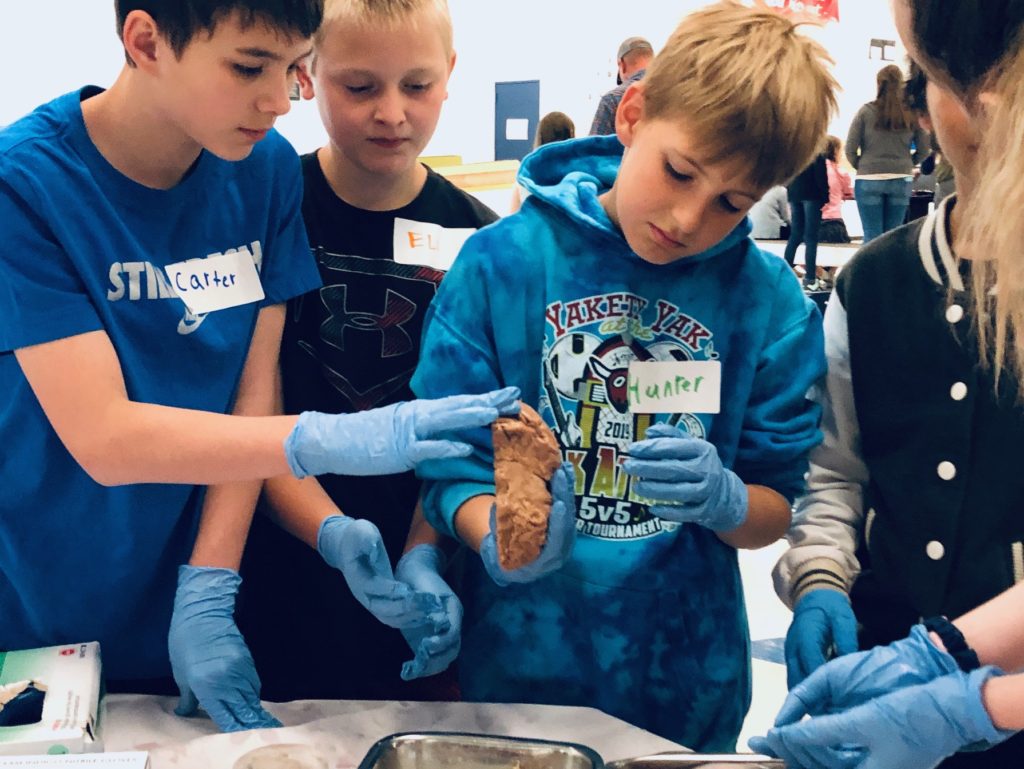
LEARN MORE: Noggins in Nod: The science of sleep
LEARN MORE: Brains, biofeedback & SLEEP @ Fort Vancouver!
LEARN MORE: The content of recurrent dreams in young adolescents
LEARN MORE: The interrelated effect of sleep and learning in dogs
LEARN MORE: Rapid eye movement density during REM sleep in dogs (Canis familiaris)
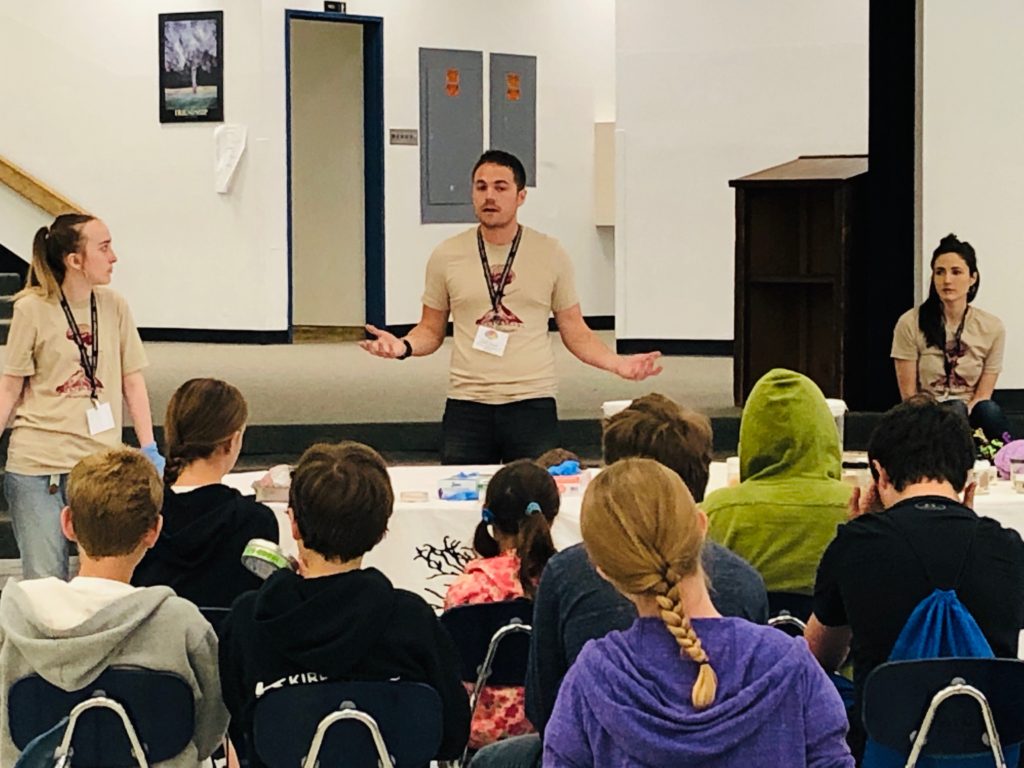
From Jacob Schoen at OHSU: “This beautiful summer day could have been spent at the river, or eating ice cream, but the community showed up to learn about the brain! How many people ever hold one in their own hands and ask questions about it? Even the parents didn’t wait outside for their kids to get out of ‘Brain Camp’ – they joined right in!”
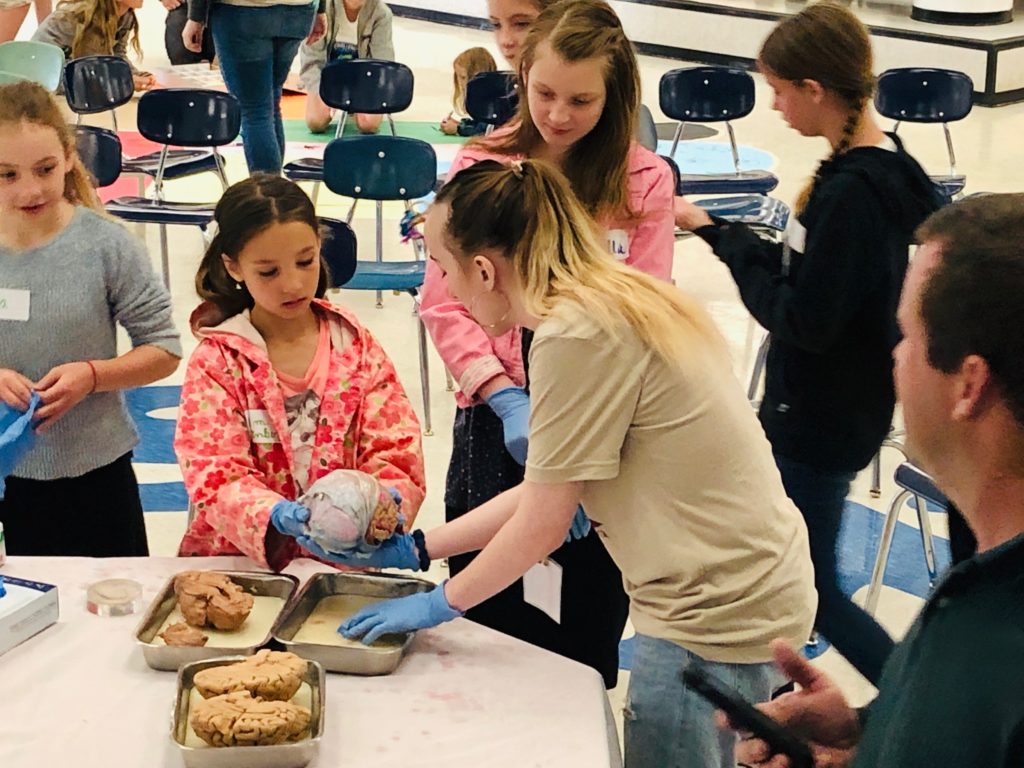
“Whenever I volunteer with NW Noggin I know that accurate science will be presented, from how research moves from grant applications to therapeutic medications, and covering diverse, audience-driven topics, from mental health to the wonderful world of sleep and dreams. That is the beauty of science! And with all the stunning nature in eastern Oregon, where I grew up, it isn’t hard to look around and wonder about how we interact with our environment and each other. I was able to connect with a group full of amazing scientists (all these young students included). We came up with problems, thought about how we might address these problems, and explored where we might go from here to get a better picture. And the cycle repeats with more questions.”
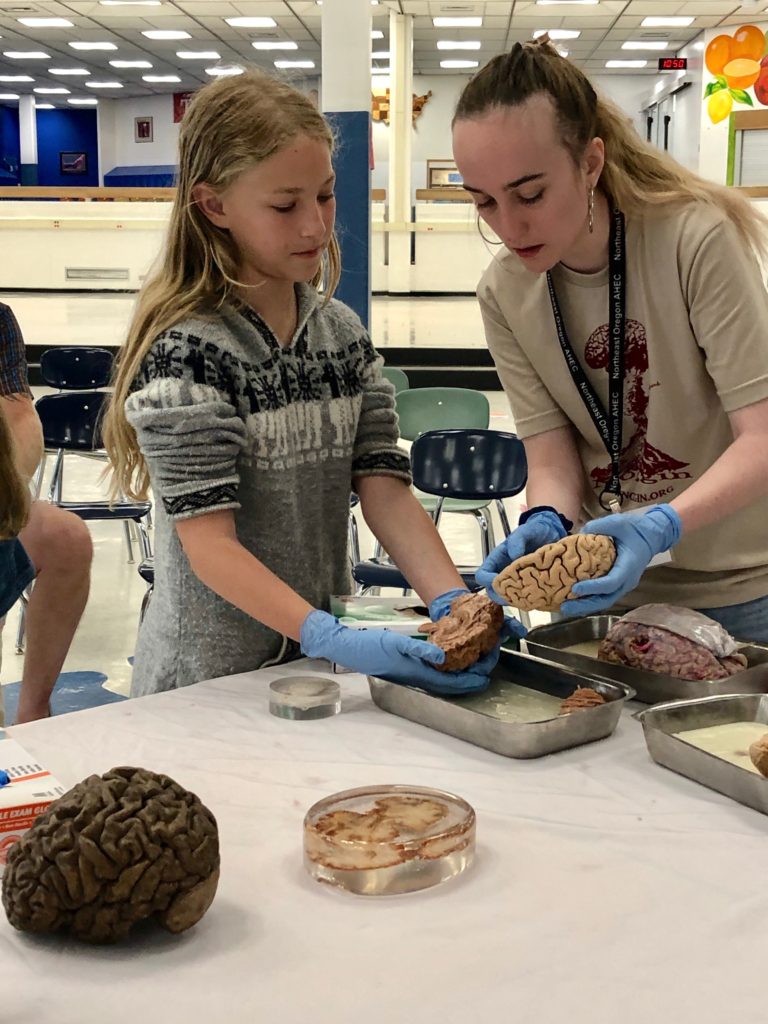
“When kids realize that we don’t come to lecture them, but to listen and inspire, there is a change of energy in the room. I spent a lot of time listening to the questions and stories of both MedQuest and Brain Camp students. The deeper you dive, the more questions you have. The neuroscience of dreams, the sense of self, and empathy are all gripping topics being explored by scientists who are also real PEOPLE. The questions were real. The students wanted to go deeper into the neurological processes that offer insight into experiences they know about, including ADHD, anxiety, eating disorders, and depression. Our conversations could have gone on and on. The time literally flew by and I loved it. And after going deeply into the science of these difficult topics it is clear that we made a connection.”
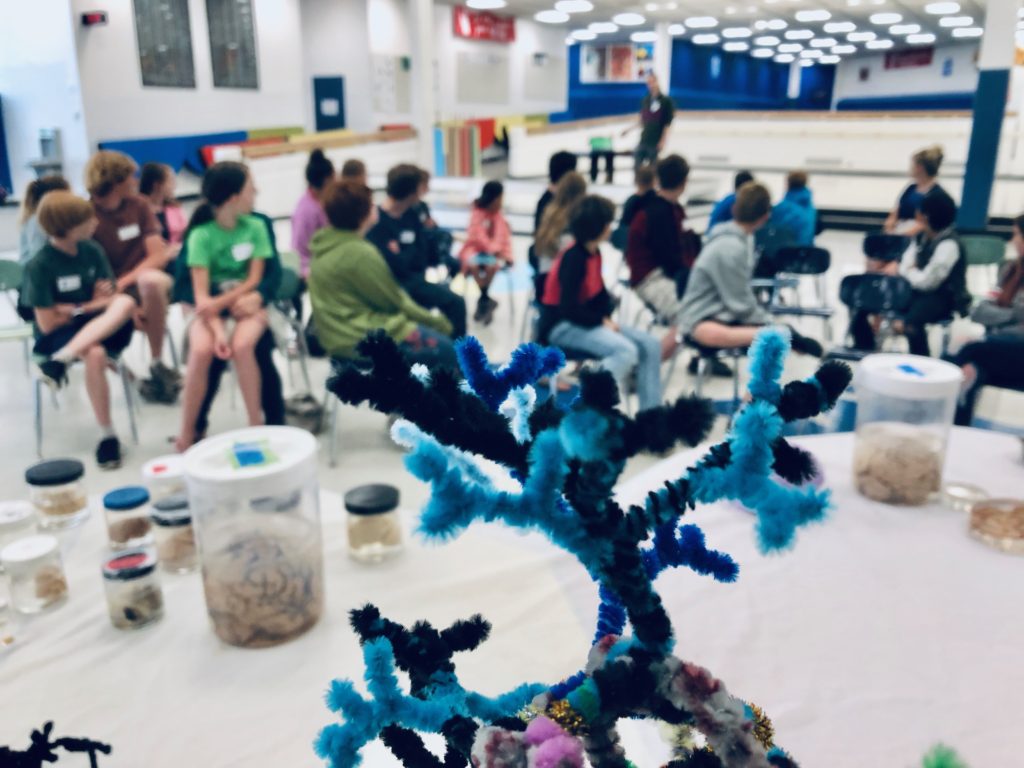
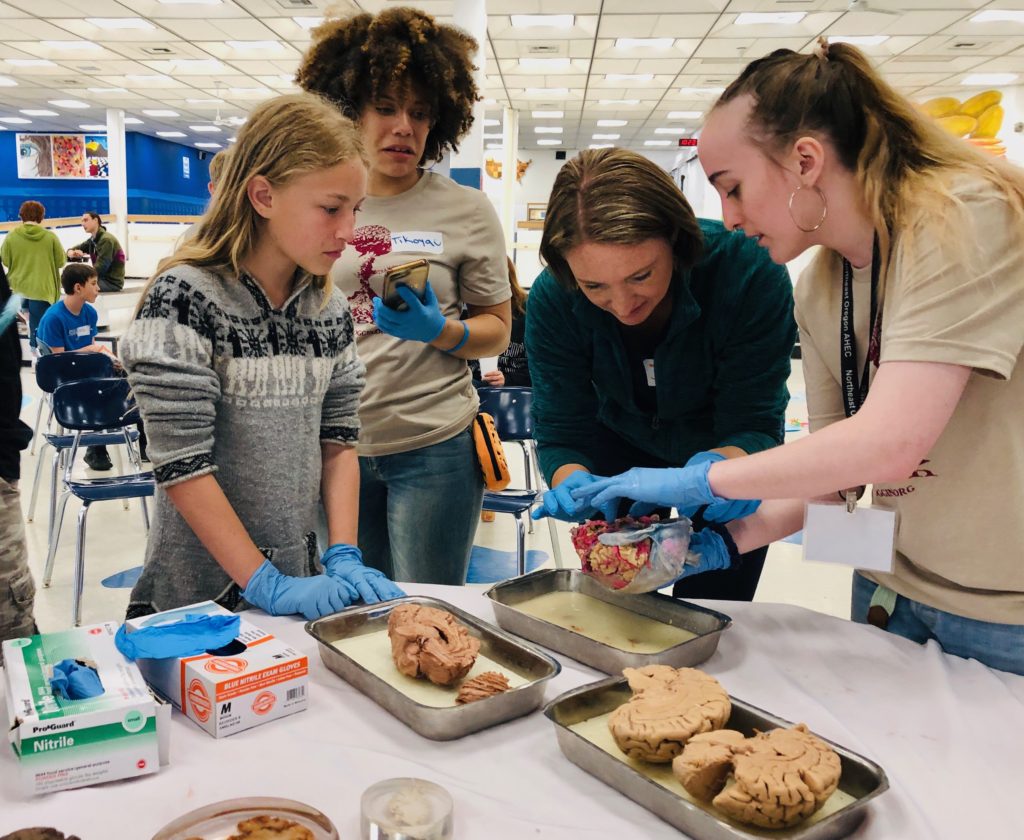
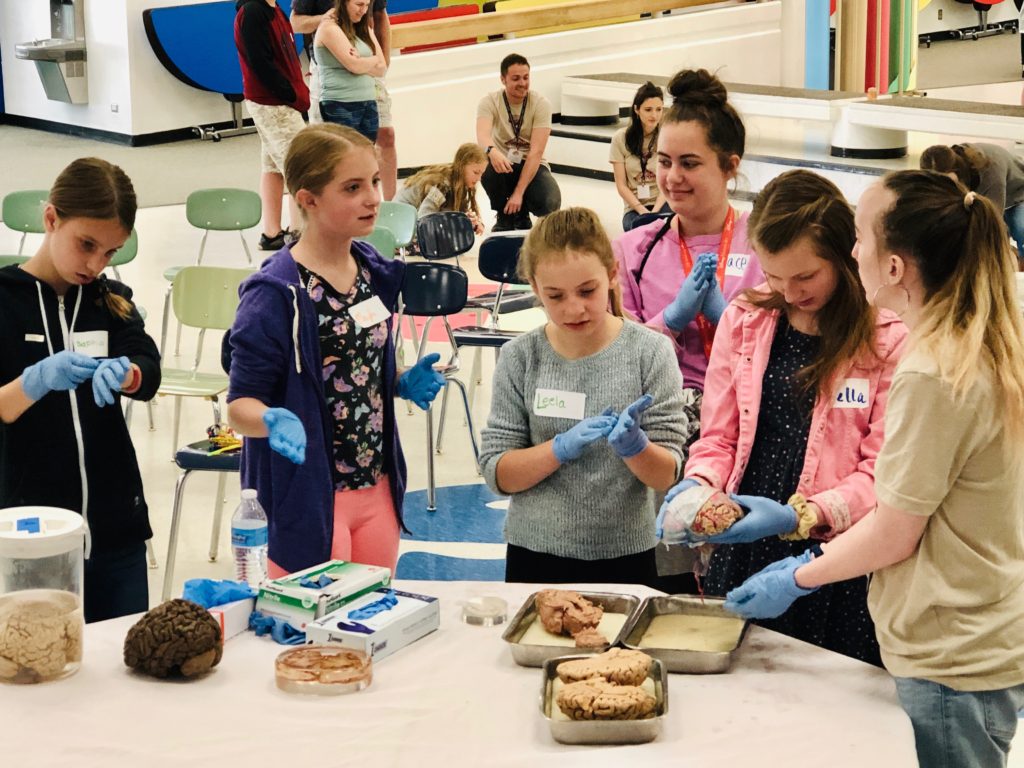
From Julia Schmidt, PSU Neuroscience Club President: “This outreach trip was such an awesome experience! A highlight from both days was telling the story of Phineas Gage. While I’ve heard this tale multiple times in college, I was able to share it with students who were super interested, because many were discovering the importance of the prefrontal cortex in effective social decision-making for the first time!”
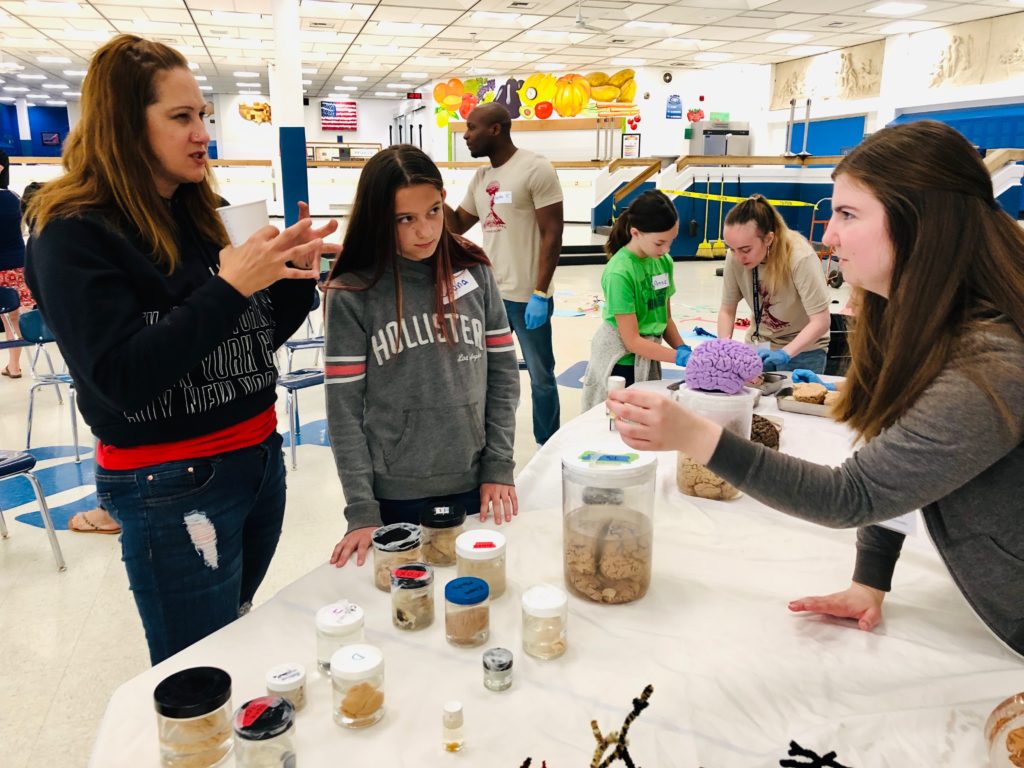
LEARN MORE: “No longer Gage”: an iron bar through the head
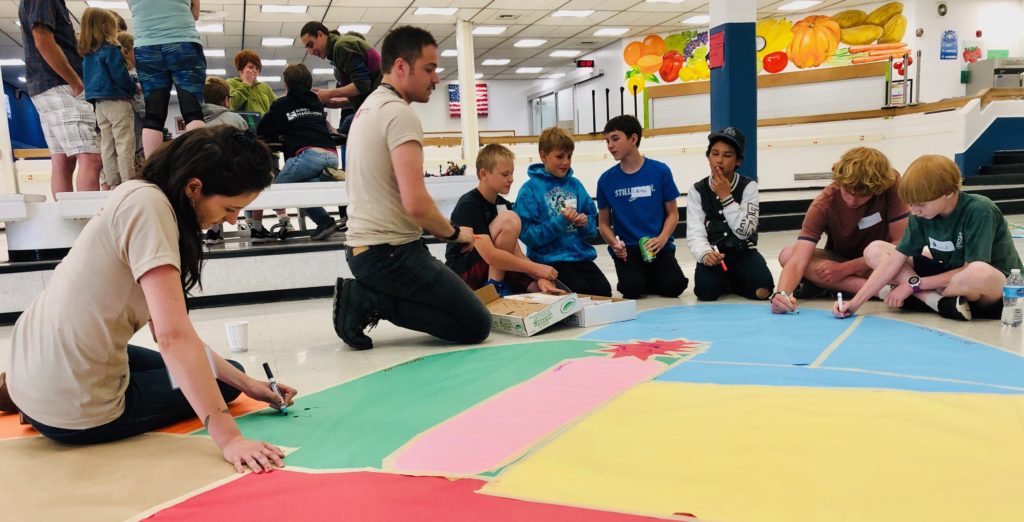
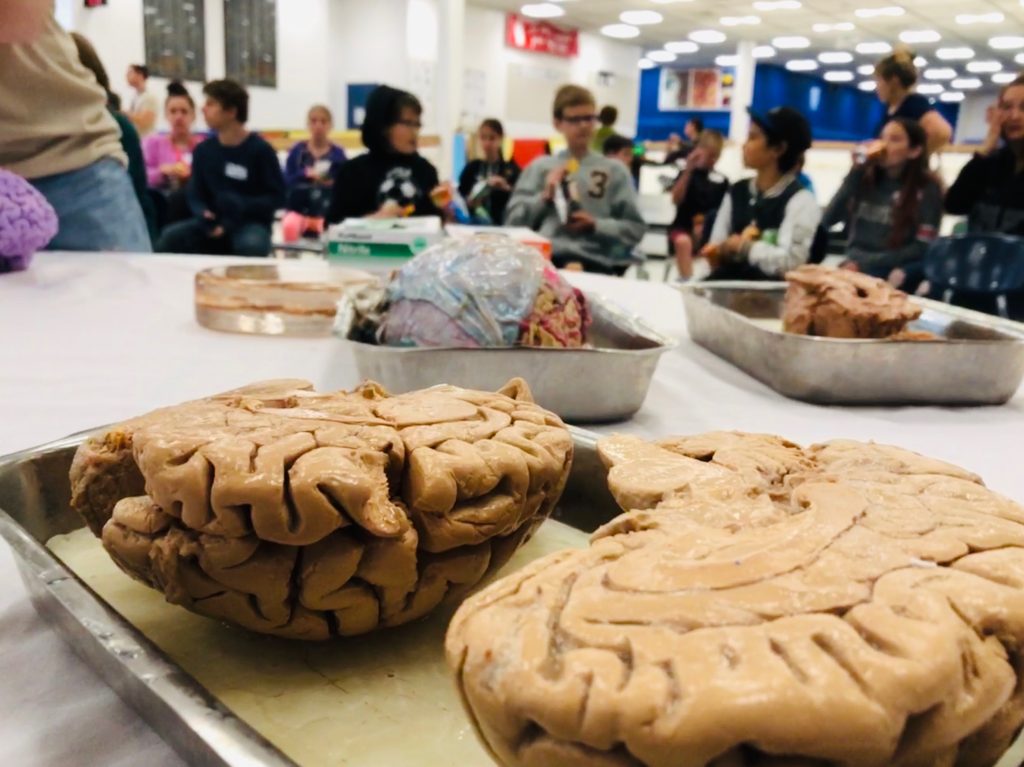
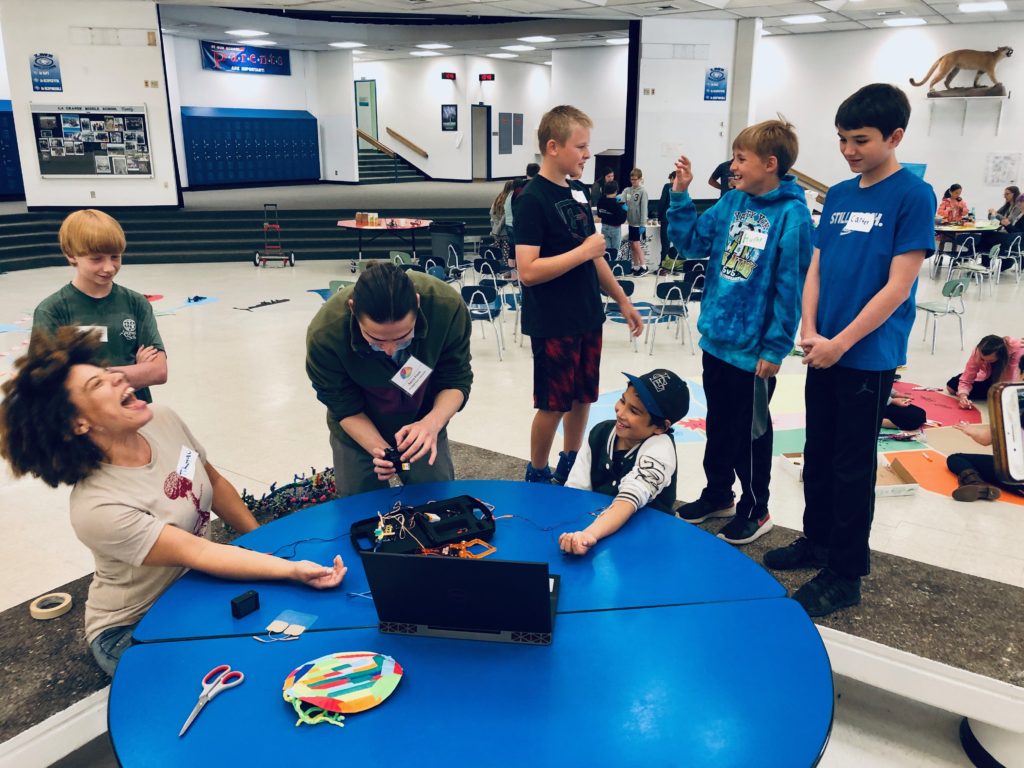
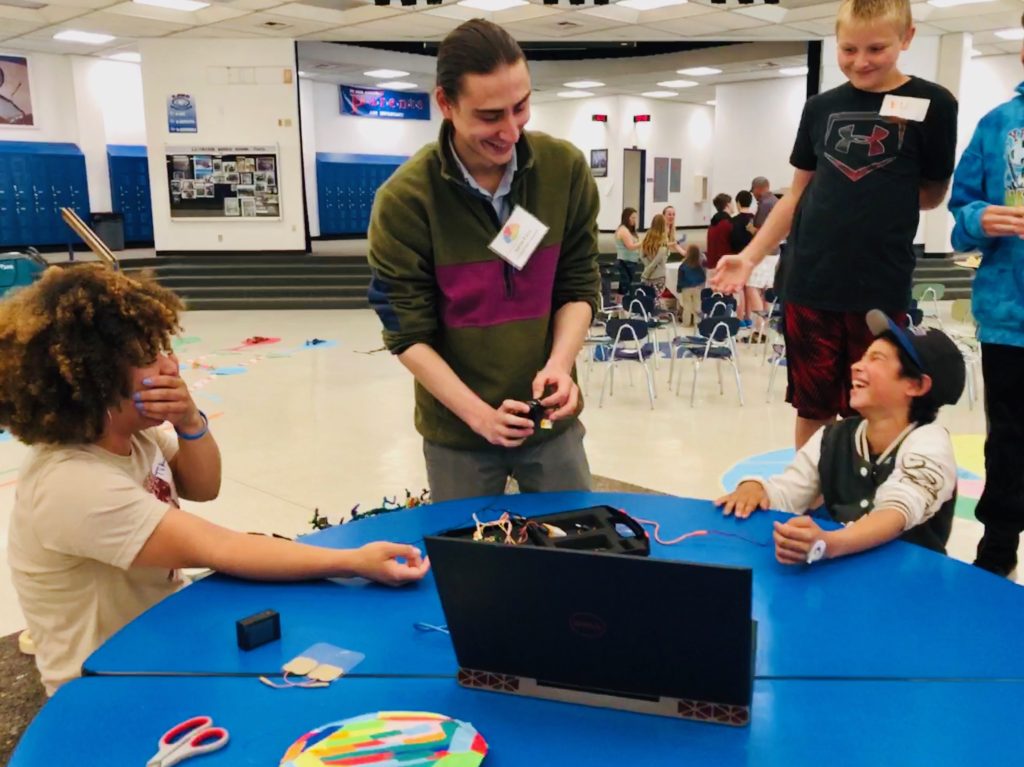
So much fun, so much excitement, so much learning, so many wonderfully strengthened new community connections…
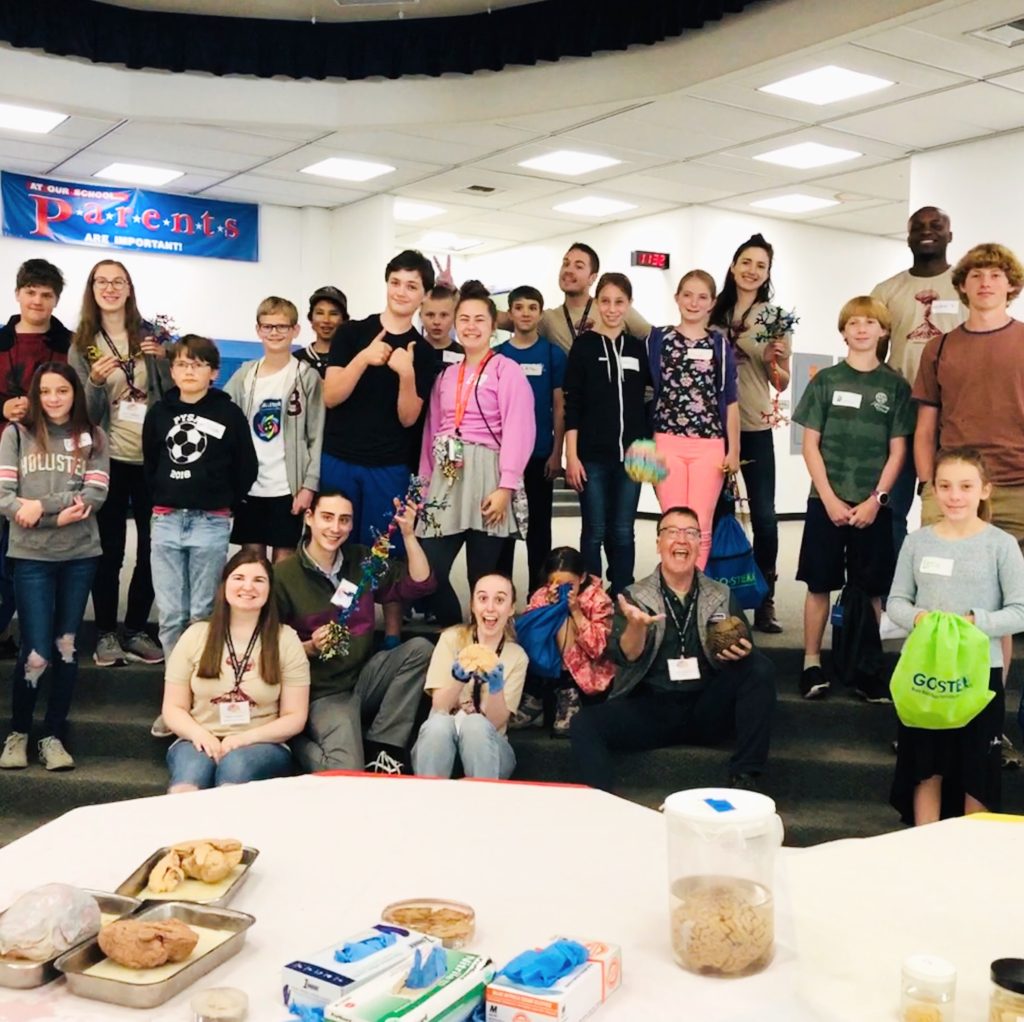
THANK YOU Leslie, Ciara, Tikoya and Maggie from GO-STEM, and Meredith and Brittany from NEOAHEC, for some healthy long term potentiation! We look forward to more excitatory engagement 🙂
